Rustic style exudes warmth and character, making it an enduring favorite for living rooms. However, applying this aesthetic to a small space requires thoughtful design to avoid overcrowding. This collection of 20 small rustic living room ideas blends natural materials, cozy textures, and clever layouts to maximize both style and functionality. From reclaimed wood accent walls to space-saving multifunctional furniture, each idea is tailored to ensure your compact living area feels inviting and authentic. Whether you’re drawn to exposed beams, vintage finds, or ambient lighting, these design insights offer practical inspiration for crafting a cozy, rustic retreat in any small home.
1. Reclaimed Wood Accent Wall
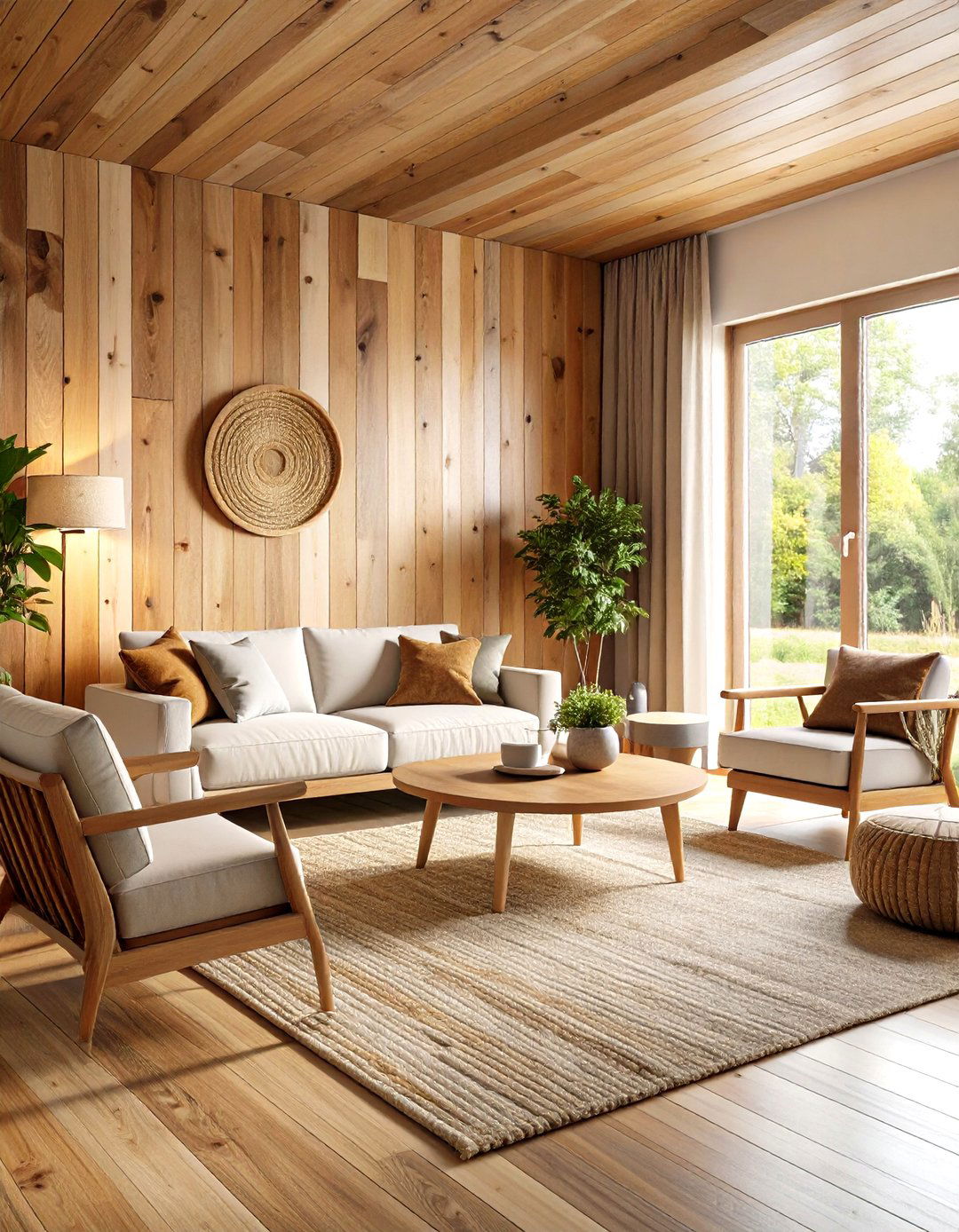
Anchoring a small living room with a reclaimed wood accent wall instantly injects rustic charm and depth without bulky furnishings. By selecting weathered planks in varying tones, you create a focal point that draws the eye and adds tactile interest. This approach can be achieved with full wall paneling or smaller sections behind seating to avoid overpowering the space. Reclaimed wood’s natural imperfections and patina amplify the lived-in aesthetic, while lighter finishes help reflect light in compact rooms. Installing peel-and-stick reclaimed wood panels offers a budget-friendly, DIY-friendly solution that refreshes your walls with earthy warmth. Additionally, integrating built-in shelving or floating shelves on the wood accent wall can further optimize storage without clutter, reinforcing both functionality and the rustic aesthetic.
2. Neutral Color Palette with Earthy Tones
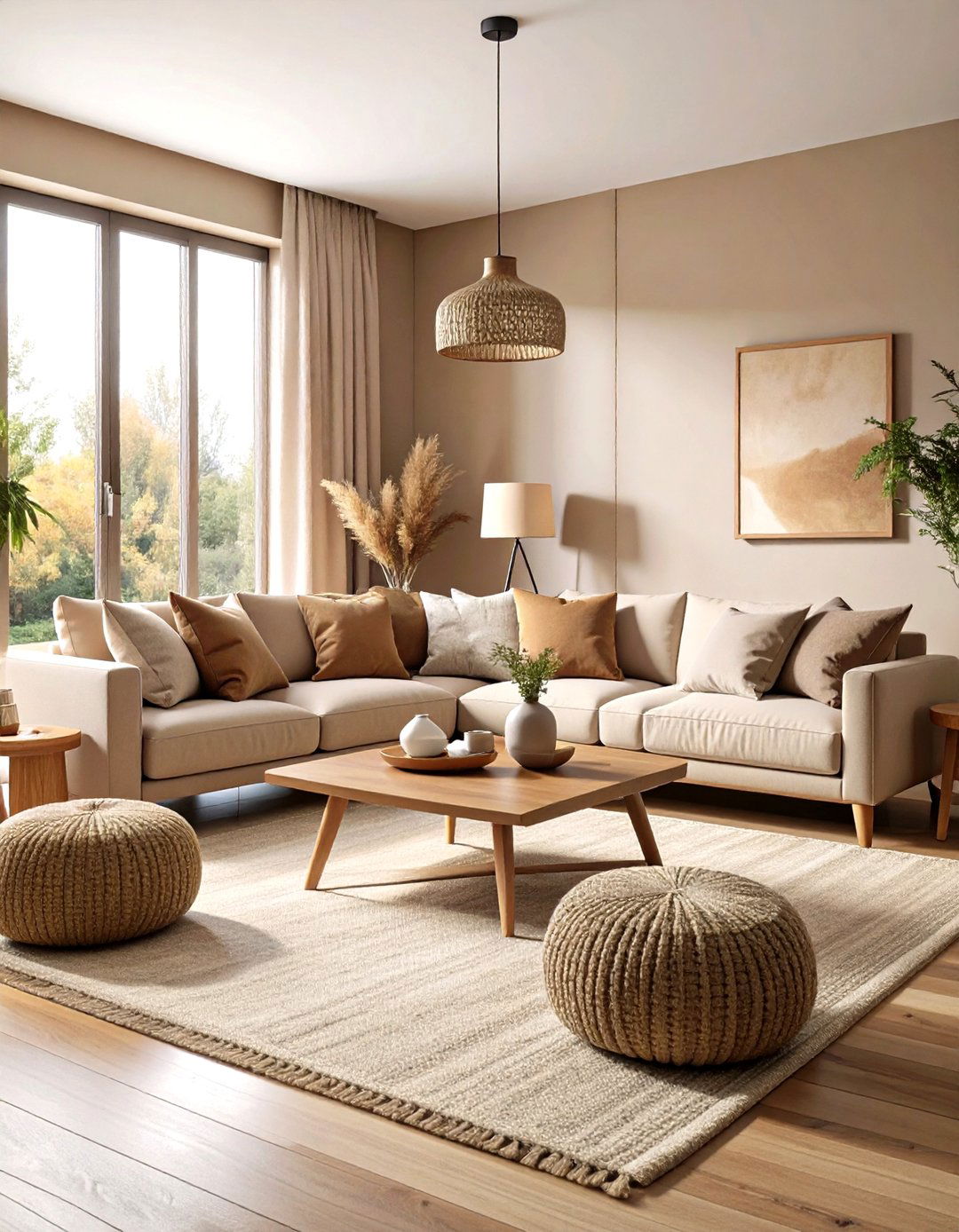
Opting for a neutral color palette centered on beiges, creams, and muted browns establishes a serene backdrop that highlights rustic elements without crowding a small living room. Earthy hues on walls or large furnishings convey warmth and pair seamlessly with wood finishes, metal accents, and natural textiles. By minimizing color contrasts, you allow architectural features—like exposed beams and stone fireplaces—to stand out. Gentle pops of color can be introduced through accent pillows or artwork, ensuring the overall scheme remains cohesive. In compact spaces, painting ceilings and trim in the same neutral tone can visually expand the room. Additionally, selecting low-sheen paint finishes helps bounce light around, further enhancing the cozy yet open impression within a modest footprint.
3. Cozy Layered Textiles
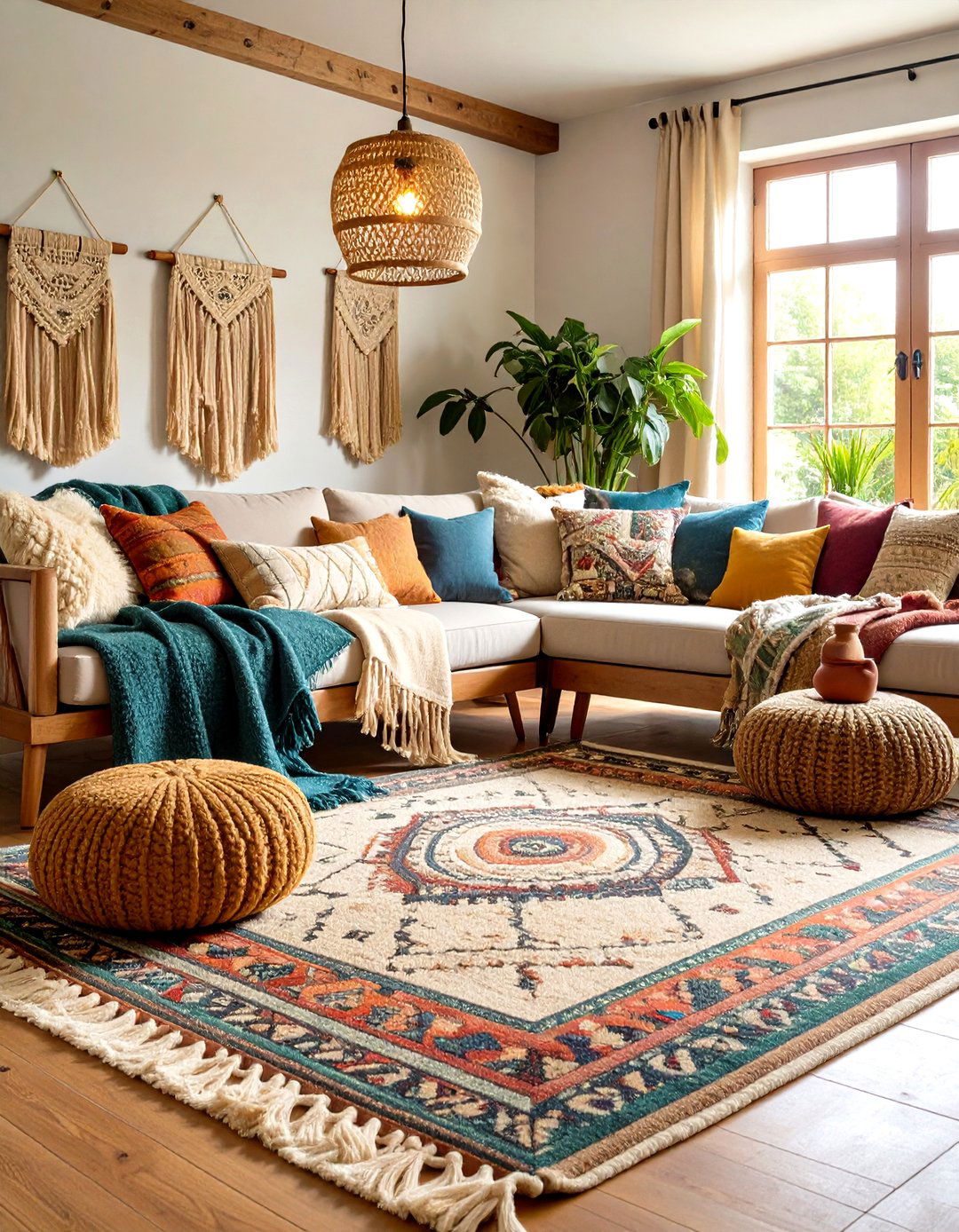
Layering textiles transforms a small rustic living room into a snug retreat. Start with a plush area rug anchoring the seating area, then add throw blankets in natural fibers like wool or linen for softness and warmth. Incorporate throw pillows in varying textures—knitted, woven, or leather—to introduce depth and visual interest. Draping a textured throw over an armchair or sofa instantly elevates the rustic vibe, while curtains in heavyweight fabrics frame windows and soften stark lines. Mixing patterns such as subtle stripes or plaid nods to traditional country style without overwhelming limited space. Ensure each textile complement aligns with the room’s earthy palette for a harmonious look.
4. Vintage or Distressed Furniture

Integrating vintage or distressed furniture pieces adds authenticity and character to a small rustic living room. Look for secondhand finds—an old farm table repurposed as a coffee table or a worn leather armchair from a flea market. Distressed finishes reveal layers of paint and wood grain, contributing to a lived-in charm. To maintain balance, choose one or two statement pieces and pair them with simpler, modern items to prevent overcrowding. Refinishing knobs on cabinets or applying a light whitewash to wooden surfaces can refresh heirloom furniture while preserving its patina. When selecting upholstery, opting for neutral-toned fabrics or subtly patterned textiles ensures these pieces integrate seamlessly with the rustic décor.
5. Natural Stone Fireplace or Feature
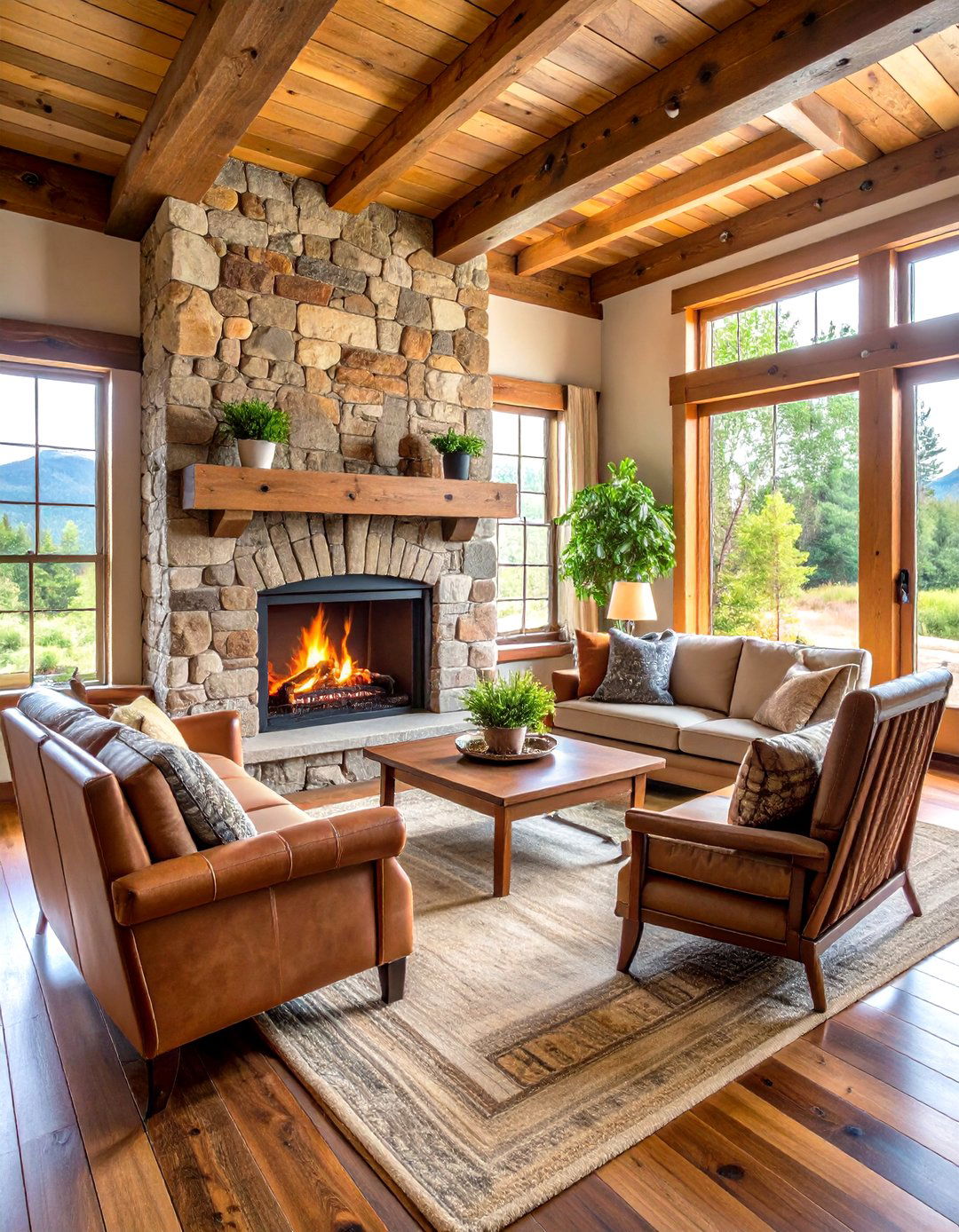
A natural stone fireplace or feature wall becomes an inviting focal point in a small rustic living room. Rough-hewn stone, whether limestone, fieldstone, or stacked stone veneer, brings texture and an organic element that complements wood accents. Position seating to face the fireplace, creating a cozy gathering spot that maximizes warmth and ambiance. If a full fireplace isn’t feasible, consider a stone-clad hearth or faux-stone panel behind a media console. Pairing stone with a reclaimed wood mantel further enhances the rustic character. Light-colored grout or mortar can brighten the feature, ensuring the room remains airy despite the robust material.
6. Exposed Wooden Beams
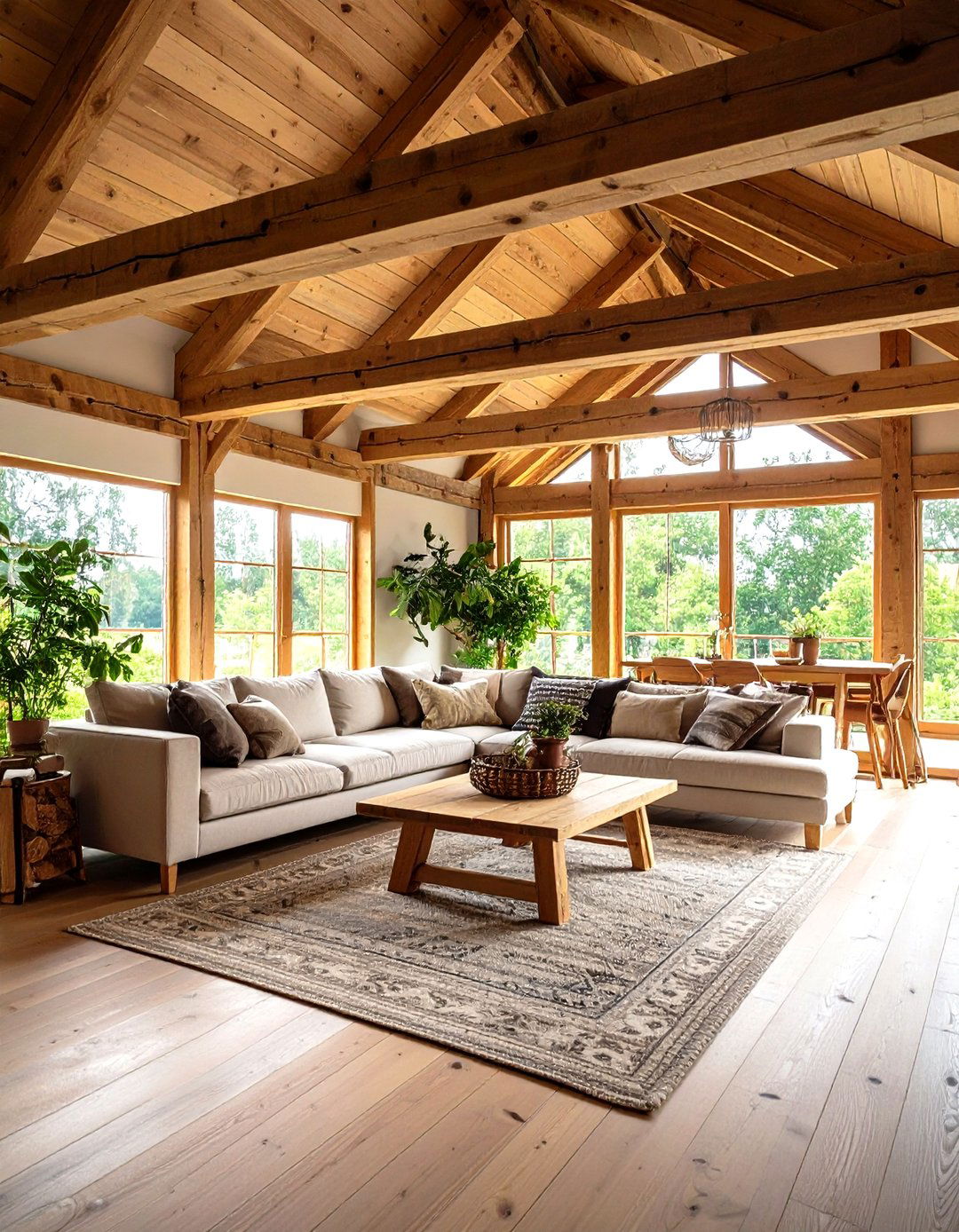
Exposed wooden ceiling beams instantly convey rustic charm and architectural interest, even if your home didn’t originally include them. Faux beams made from lightweight reclaimed wood or fiber-reinforced composites can be installed across the ceiling to mimic authentic timber construction. In small spaces, keep beam profiles slender to avoid a heavy overhead presence. Staining the beams in a tone that coordinates with flooring or furniture ensures cohesiveness. Highlighting the beams with subtle accent lighting enhances their texture and draws the eye upward, creating the illusion of higher ceilings. This structural yet decorative element reinforces the cabin-like appeal central to rustic design.
7. Sliding Barn Doors for Room Dividers

Sliding barn doors are a hallmark of rustic style and serve as efficient space savers in small living rooms. Mounted on a single overhead track, these doors eliminate the need for swing clearance, making them ideal between living areas or as media center enclosures. Choose distressed wood panels or repurposed planks to accentuate the rustic aesthetic. Hardware options range from iron wheels and straps to custom hand-forged hinges, adding an industrial edge. If solid doors feel too heavy, opt for panels with glass or open slats to maintain light flow. When properly installed, sliding barn doors also help muffle noise between adjacent spaces.
8. Space-Saving Multi-Functional Furniture
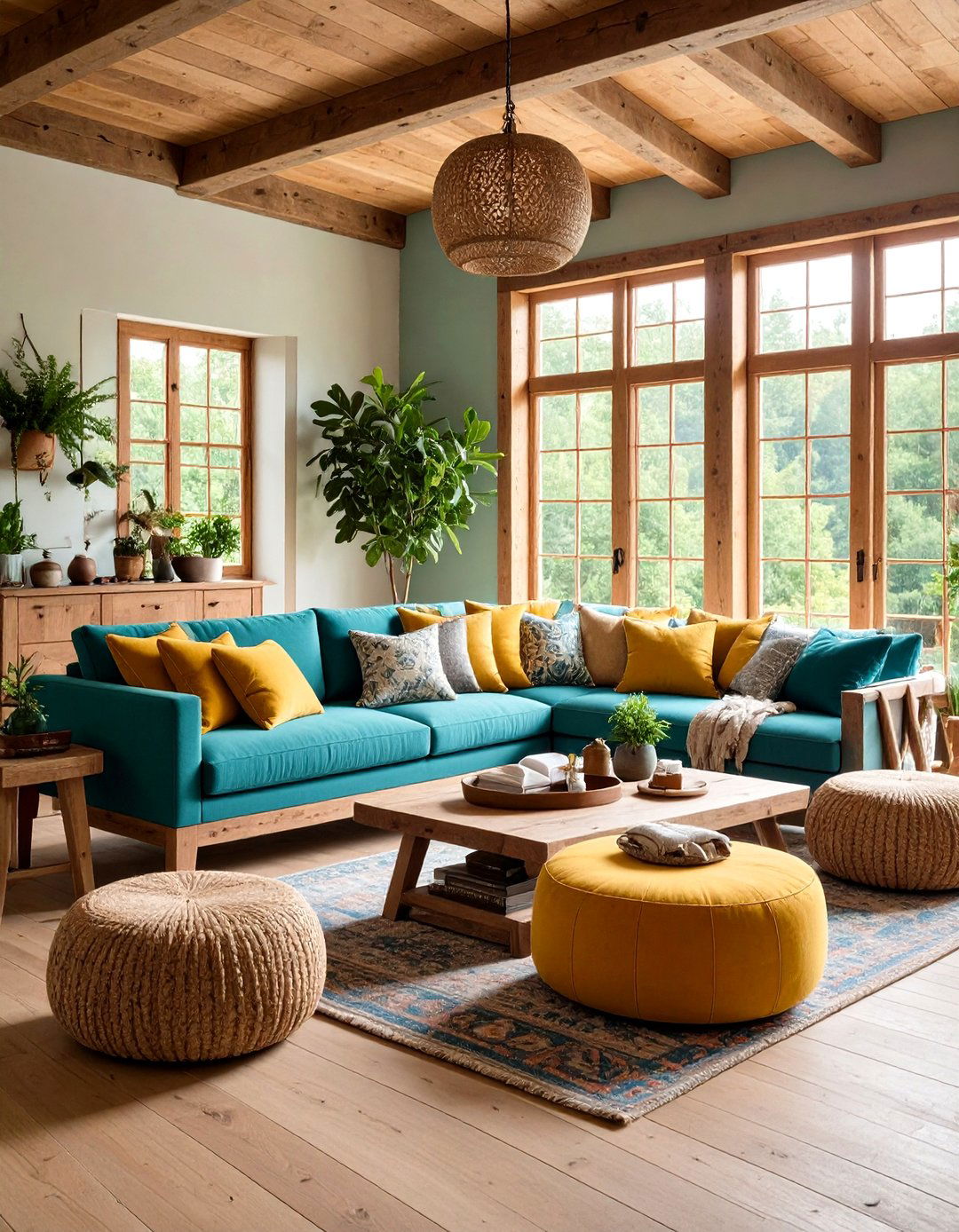
In a small rustic living room, multi-functional furniture maximizes utility without sacrificing style. Look for ottomans with hidden storage, nesting tables that expand for guests, or sofa beds for overnight visitors. A console table-upholstered bench can double as seating and a display surface, while a coffee table on casters offers mobility and stashes extra blankets. Choosing pieces that combine reclaimed wood and metal maintains the rustic character. Custom built-ins—such as a bench with storage beneath or a fold-down desk—use every inch, ensuring clutter is contained. Prioritizing dual-purpose furnishings helps maintain an open, airy feel in compact spaces.
9. Open Rustic Shelving
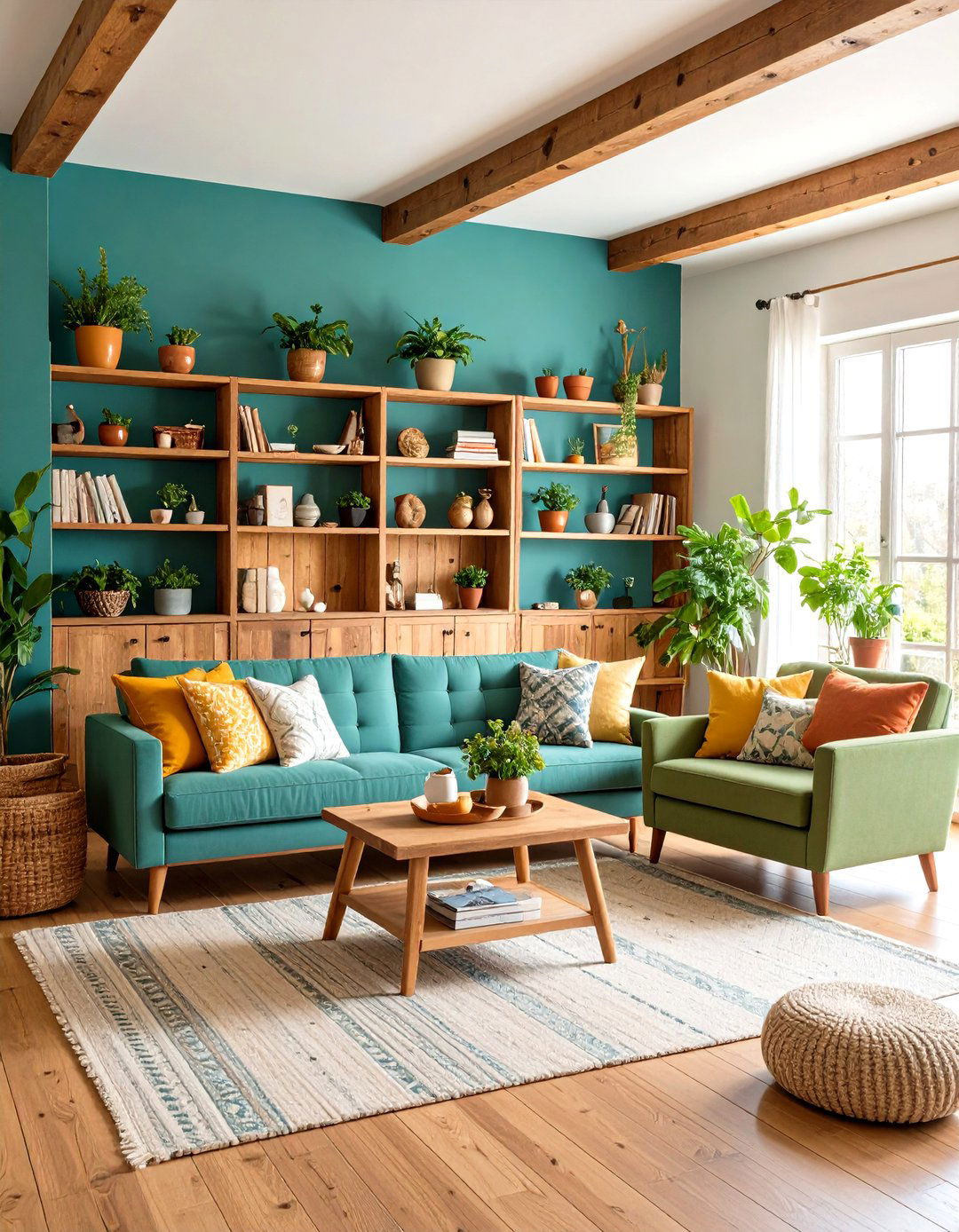
Open shelving introduces vertical storage and display opportunities while keeping a small living room airy. Install floating wood shelves with exposed brackets or arrange reclaimed wood planks on wrought-iron pipe supports. Decorate shelves with a curated mix of books, vintage décor, and woven baskets to reinforce the rustic vibe and hide smaller items. This approach provides functional organization without the bulk of closed cabinetry. For an eclectic look, paint hardware in muted tones and distress edges of the shelving for added character. Position shelves above seating or media consoles to draw the eye upward, optimizing wall space in modest footprints.
10. Soft, Ambient, Layered Lighting
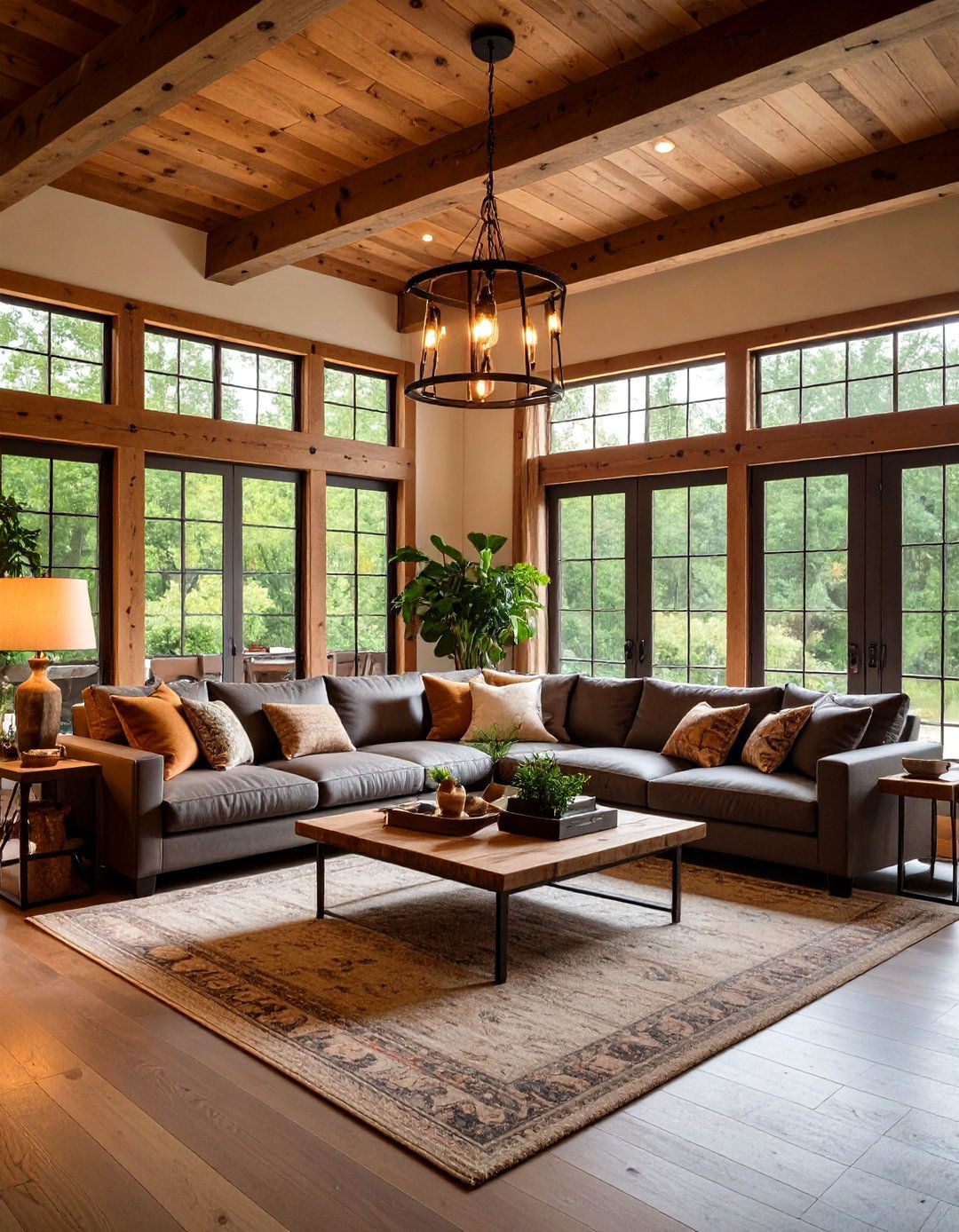
Layered lighting transforms a small rustic living room into a warm, inviting retreat. Begin with ambient overhead fixtures—globe pendants or wrought-iron chandeliers—to establish general illumination. Add task lighting via adjustable floor lamps or table lamps featuring metal or wooden bases. Finally, incorporate accent lights, such as wall sconces with Edison bulbs or LED strips highlighting architectural features. Mixing light sources at different heights prevents harsh shadows and adds depth. Choosing fixtures with distressed finishes or rope details emphasizes the rustic theme. Using dimmer switches across all fixtures provides control over mood and brightness, essential for creating cozy evening atmospheres in compact areas.
11. Woven Baskets and Rustic Storage
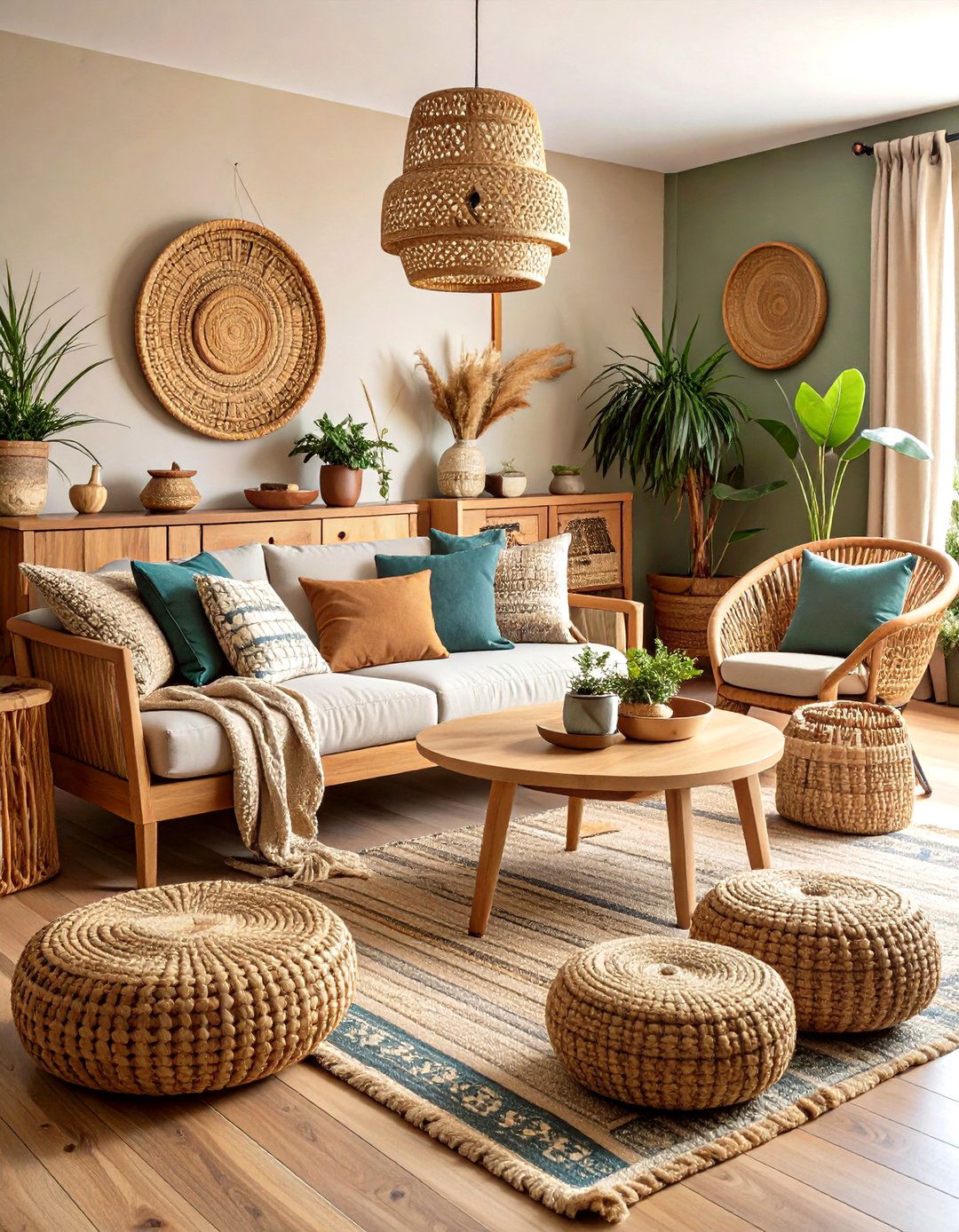
Woven baskets blend functionality and texture, making them ideal storage solutions in a small rustic living room. Hang baskets of various sizes on wall hooks for holding throws and pillows, or place larger floor baskets beside seating to corral magazines and toys. Materials like seagrass, rattan, or water hyacinth introduce organic tones and tactile appeal. Opt for baskets with handles for easy relocation and consider basket trays as makeshift coffee tables. Decorative yet practical, these storage elements maintain visual cohesion when grouped or staggered. The interplay of woven fibers against wood and metal accents reinforces the effortless charm of rustic décor.
12. Incorporating Indoor Greenery

Bringing plants into a small rustic living room adds life and natural air purification while enhancing the aesthetic. Select easy-care species like snake plants, pothos, or ZZ plants, positioning them on open shelves or in terracotta pots to echo the earthy palette. Statement plants—such as fiddle leaf figs or weeping figs—work well in corners to fill vertical space. For smaller footprints, create a hanging plant vignette with macramé hangers or wall-mounted planters. Mossy wall art or mini vertical gardens can serve as living accent pieces. Varying pot textures—from rough clay to woven fiber—further underscores the rustic ambiance.
13. Layered Rugs and Textured Floors
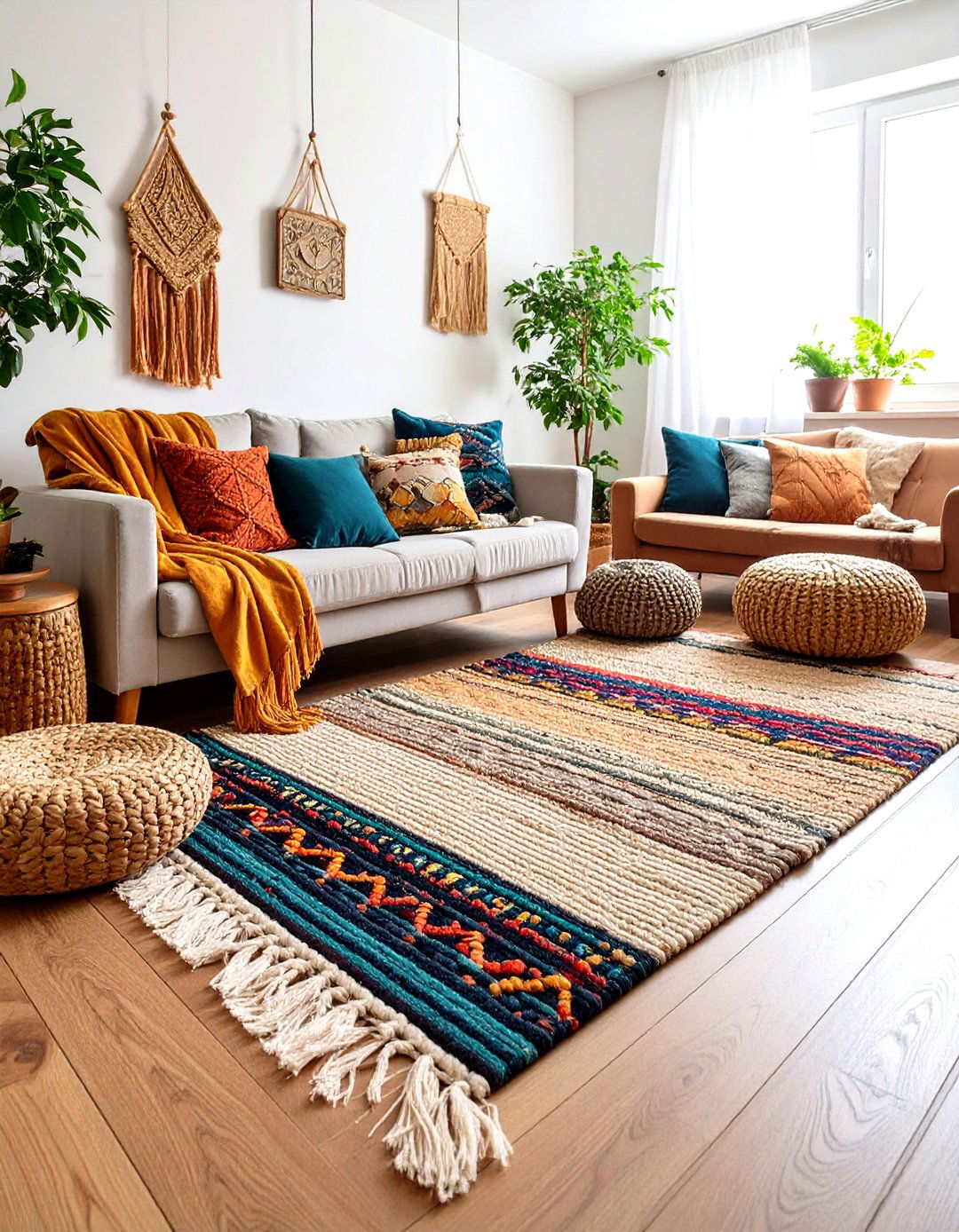
Layering rugs introduces dimension and insulation to a small rustic living room floor. Begin with a durable jute or sisal rug as the base, then layer a softer wool or cowhide rug atop for contrast. Placement under key furniture anchors the layout and designates zones in open-concept spaces. Opt for neutral or subdued patterns—such as stripes or subtle geometrics—to avoid overwhelming a small room. Natural fiber rugs wear well and add warmth, while a plush rug near seating promotes comfort. Be sure to use rug pads to prevent slipping and protect delicate flooring surfaces.
14. Metal Accents with Patina
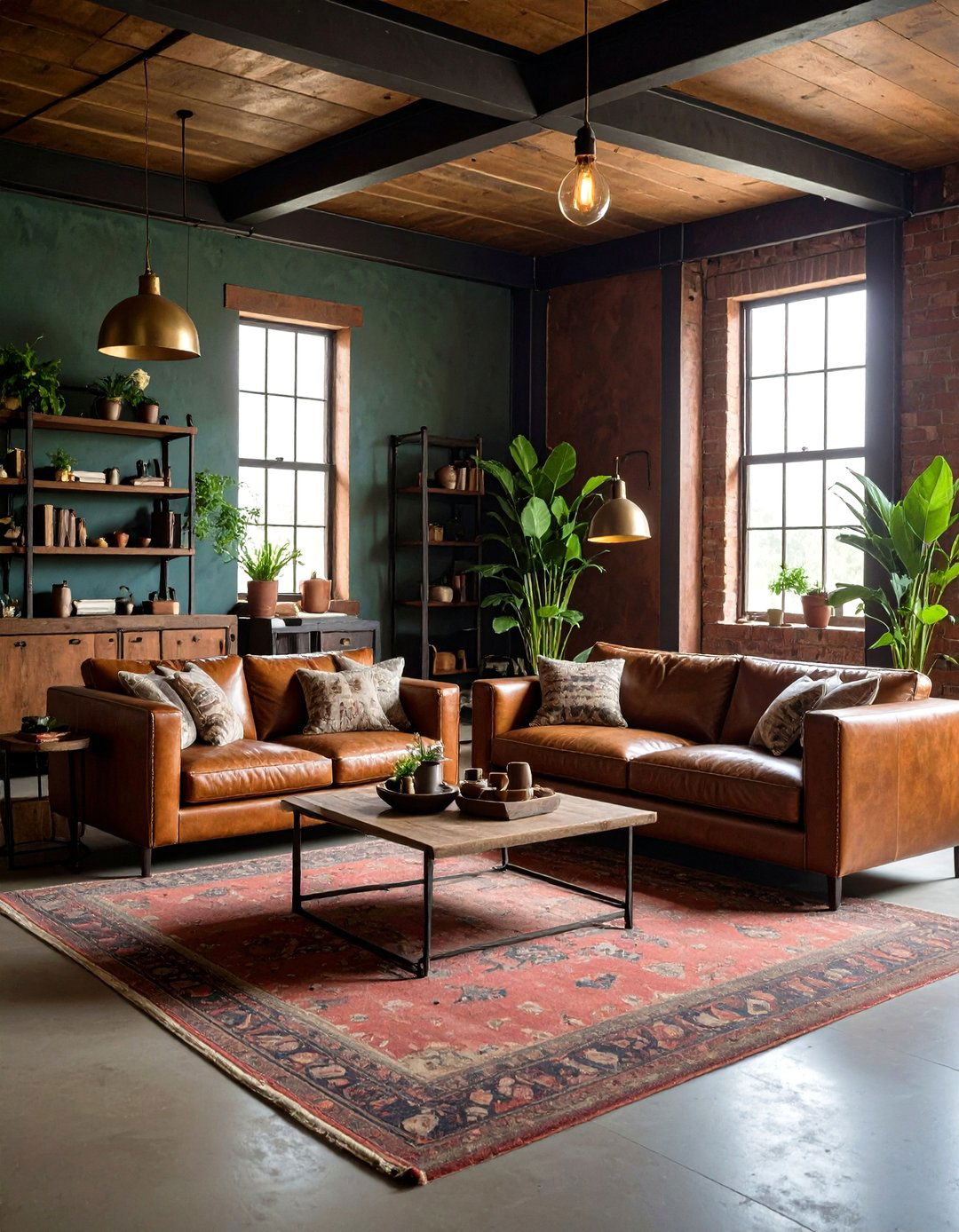
Incorporating metal accents with patina bridges rustic and industrial styles, lending a refined edge to a small living room. Consider metal-framed mirrors with aged finishes or decorative wall art in oxidized copper or brass. Hardware details—such as drawer pulls, picture frames, or candle holders—can feature verdigris tones for visual interest. A metal coffee table with reclaimed wood top or an iron floor lamp with a weathered base further reinforces the aesthetic. Balancing metal’s cool texture with warm wood and fabrics prevents the space from feeling austere. Thoughtful integration of patinated metal elevates the room’s character while maintaining its cozy rustic charm.
15. Handmade and DIY Accessories
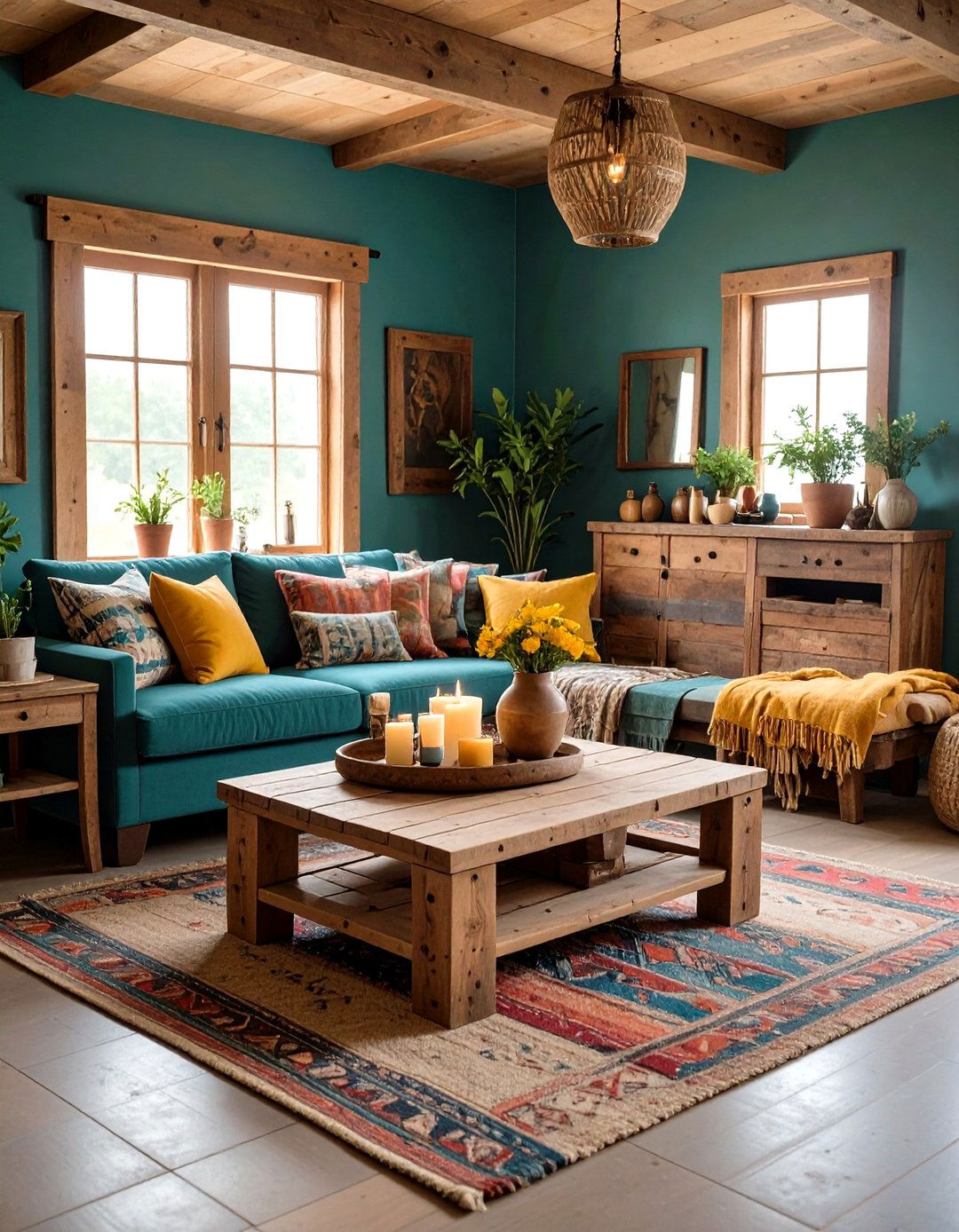
Adding handmade or DIY accessories personalizes a small rustic living room while keeping costs low. Projects such as pallet wood side tables, reclaimed barrel coffee tables, or driftwood picture frames infuse creativity and authenticity. Upcycling mason jars into candle holders, weaving wall hangings in neutral yarns, or crafting coasters from agate slices allows you to tailor décor to your space. Display DIY art on open shelving or mantel to celebrate craftsmanship. These unique pieces not only serve as conversation starters but also reinforce the rustic ethos of resourcefulness and sustainability. Embrace imperfection—slight irregularities in DIY work enhance the lived-in appeal.
16. Exposed Brick or Faux Brick Walls

An exposed brick wall or faux brick veneer brings timeless rustic texture to a compact living room. Genuine brick can be revealed by stripping paint or plaster, exposing the underlying masonry. If structural limitations exist, lightweight brick-look wall panels install easily without compromising space. The warm red or neutral gray hues of brick contrast beautifully with soft textiles and wood elements. To maintain brightness, pair with light-colored grout and strategic lighting overhead or via wall washers. A single brick wall as an accent prevents the room from feeling enclosed, offering a rugged backdrop that complements both modern and vintage furnishings.
17. Minimalistic Furniture Arrangement

A minimalistic furniture layout emphasizes open space and function in a small rustic living room. Select essential pieces—such as a compact sofa, narrow console table, and one or two accent chairs—and arrange them to promote smooth traffic flow. Avoid crowding corners; instead, float furniture slightly off walls to create visual breathing room. Maintain scale by choosing low-profile seating and tables with slim legs. Limiting ornamental items and keeping decorative objects to curated groupings preserves the uncluttered feel. This deliberate simplicity underscores the rustic charm of materials and textures while preventing a cramped atmosphere.
18. Statement Fireplace or Wood Stove
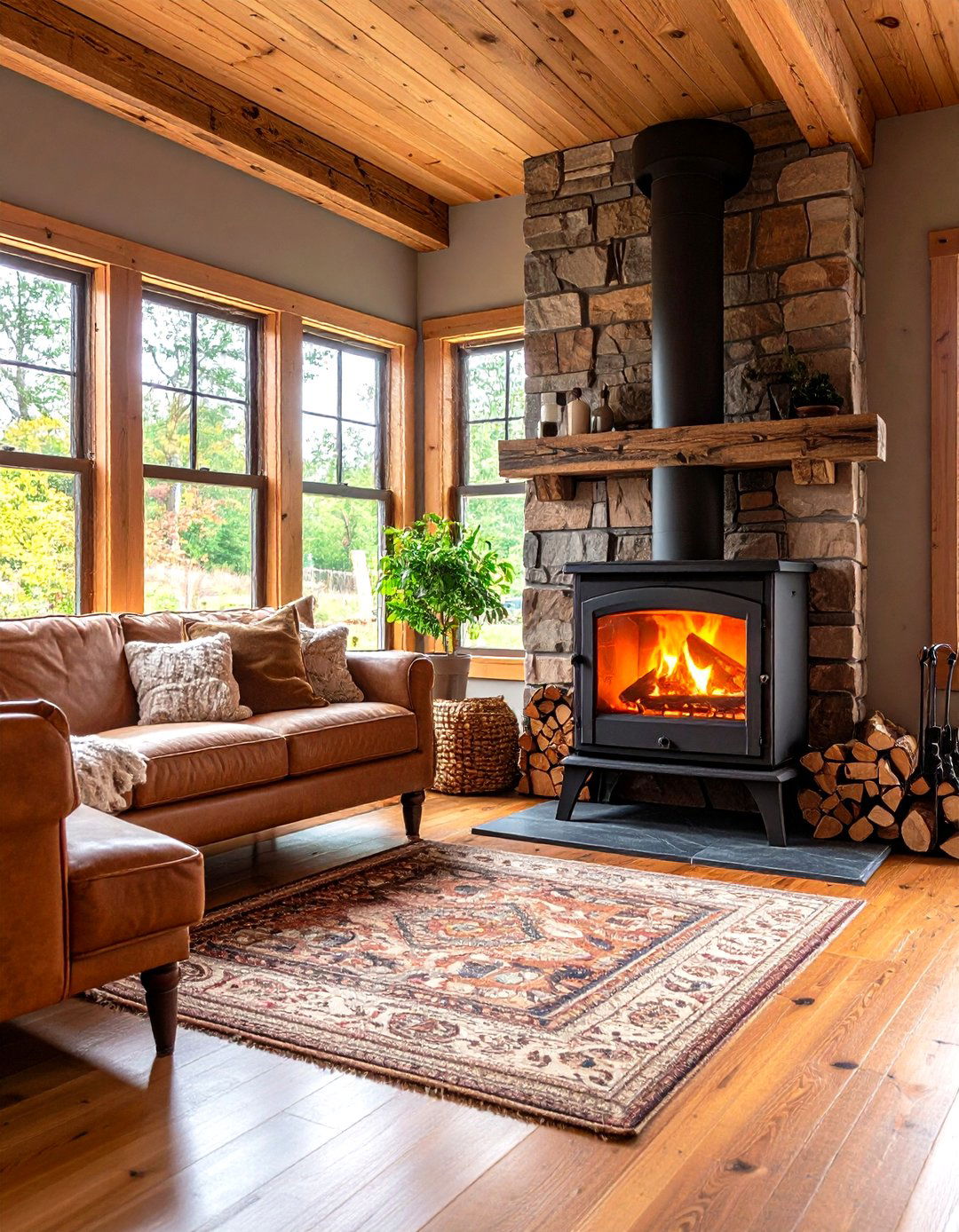
Inserting a statement fireplace or wood-burning stove instantly infuses a small rustic living room with focal warmth and charm. Freestanding wood stoves—often cast iron with decorative detailing—serve as sculptural centerpieces. If floor space is tight, consider compact models or wall-mounted electric stoves that mimic traditional designs. Surround the firebox with decorative tile, stone veneer, or a reclaimed wood mantel to enhance authenticity. For an entry-level approach, a decorative electric fireplace insert provides the glow and ambience without installation complexity. Always ensure proper clearance and ventilation to maintain safety. This cozy heat source becomes the natural gathering point in your intimate rustic retreat.
19. Repurposed Vintage Finds

Seeking out repurposed vintage finds—such as an antique trunk as a coffee table or a salvaged window frame as wall décor—injects personality into a small rustic living room. Shop flea markets and estate sales for items that can be refinished or adapted: metal milk crates become magazine holders, while old ladders repurposed as blanket racks create vertical interest. Display collections of vintage glass bottles or metal tools on open shelving to develop a curated narrative. Not only are these pieces sustainable, but they also spark nostalgia and visual intrigue. Embrace the quirks of each find; minor imperfections strengthen the rustic allure.
20. Earthy Finishes and Natural Materials
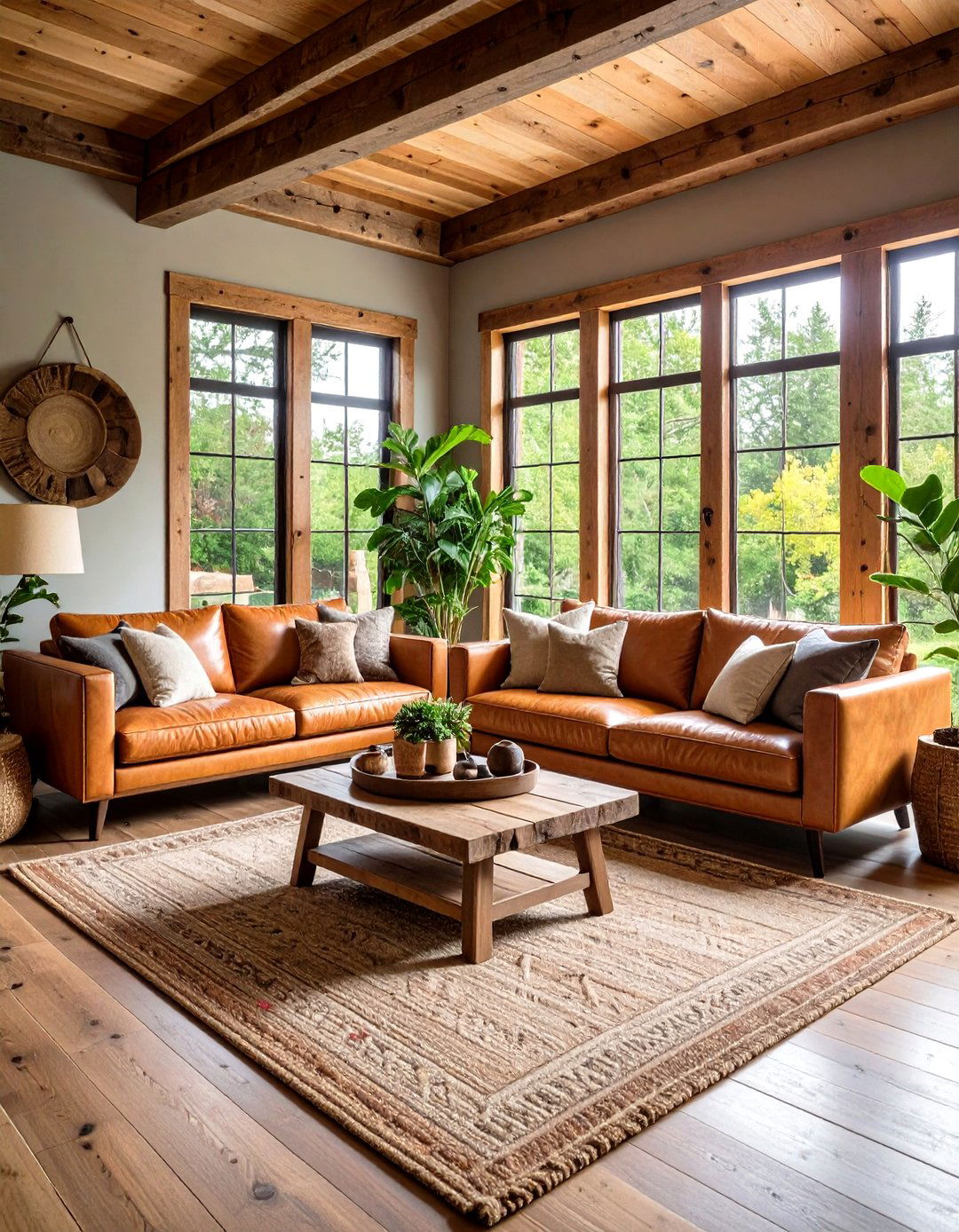
Embracing earthy finishes and natural materials completes the small rustic living room aesthetic. Incorporate surfaces like raw-edge wood tables, leather upholstery with natural patina, and stone or clay accessories. Choose unsealed or matte finishes that highlight material grain and texture. Wall treatments—such as limewash paint or earthen plaster—provide subtle tonal variation and a handcrafted appearance. Even soft furnishings in undyed wool or cotton reinforce the organic theme. By prioritizing materials sourced directly from nature, the room achieves an authentic, grounded harmony. This cohesive approach ensures lasting appeal and an environment that feels both rustic and refreshingly serene.
Conclusion:
These 20 small rustic living room ideas demonstrate how natural textures, thoughtful layouts, and a curated mix of vintage and modern elements can transform a compact space into a cozy, character-rich retreat. From reclaimed wood accent walls to multi-functional furnishings, each concept maximizes style without sacrificing room to breathe. Layered lighting, indoor greenery, and earthy finishes work in harmony to create warmth and visual interest, while minimalist arrangements ensure the area feels uncluttered. Whether you prefer DIY projects or refined industrial accents, integrating even a few of these strategies will bring rustic charm and functionality to your small living room.


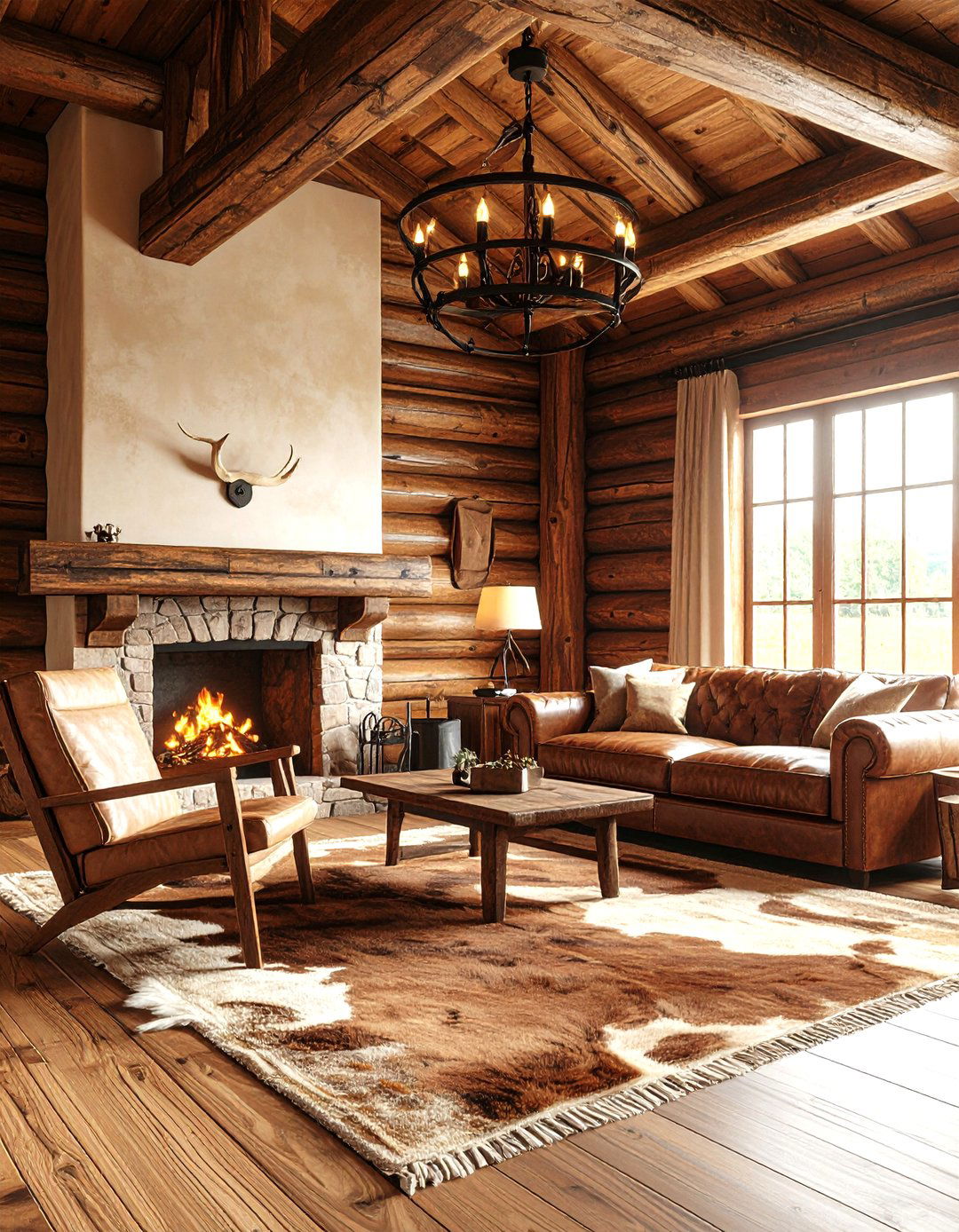
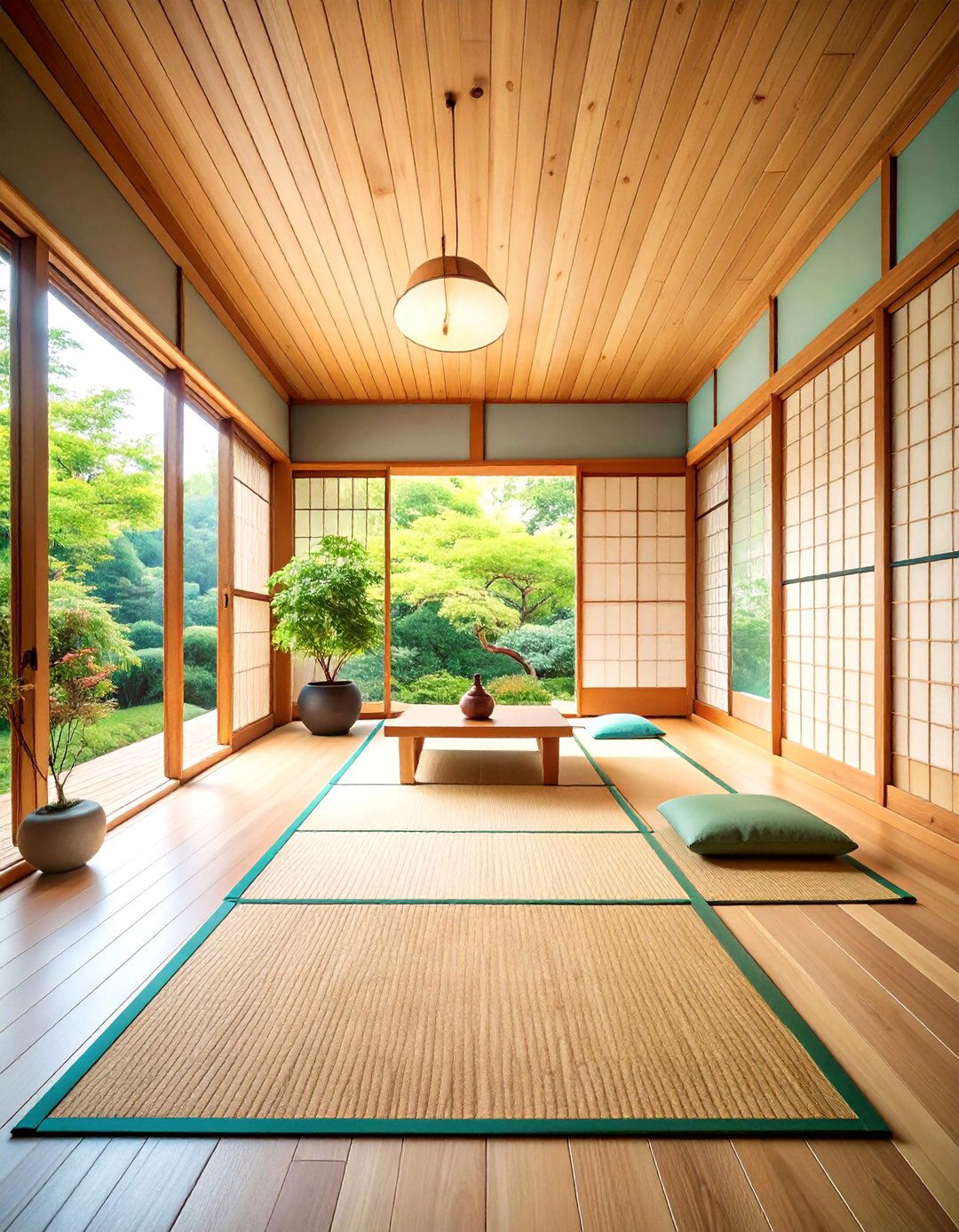
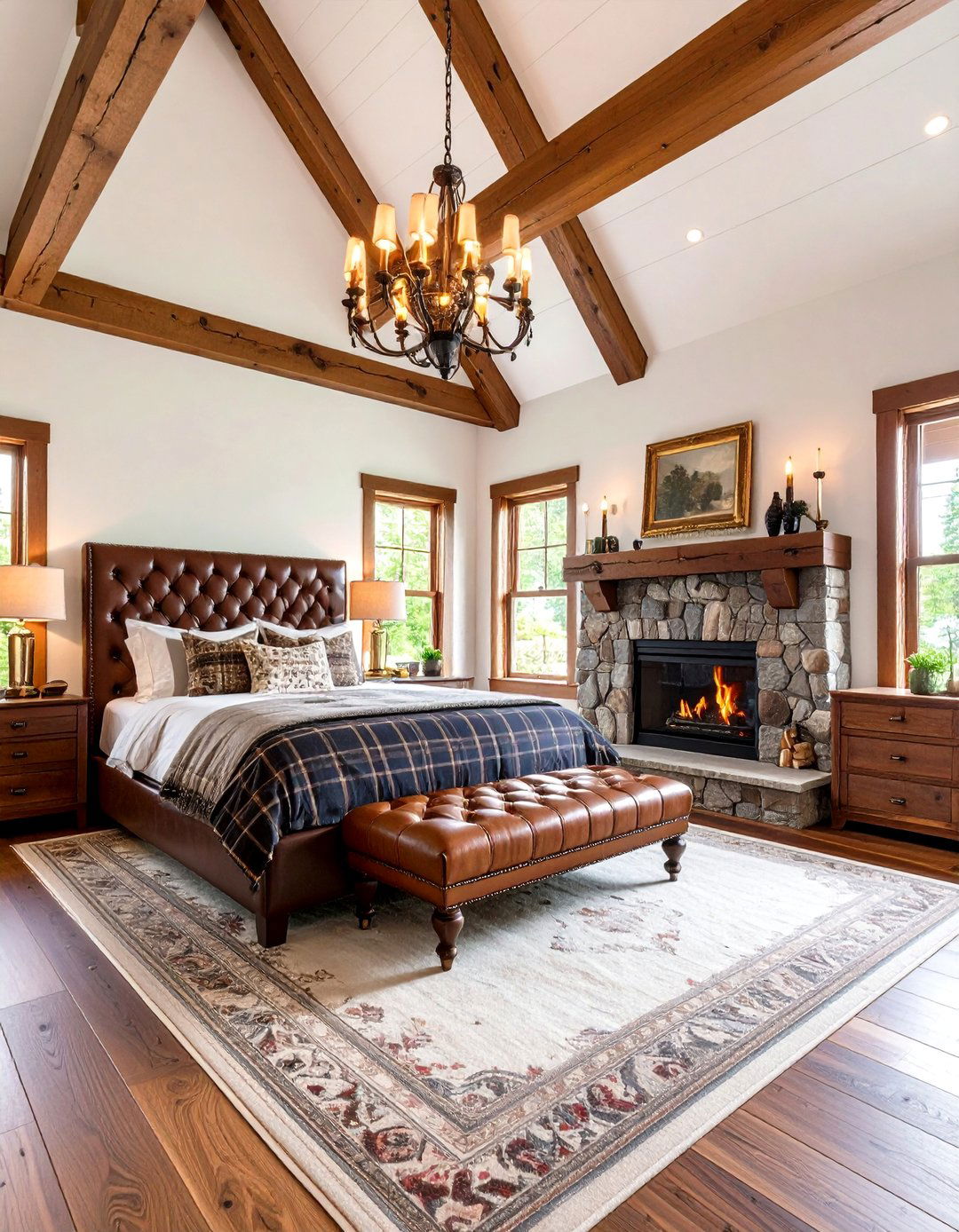
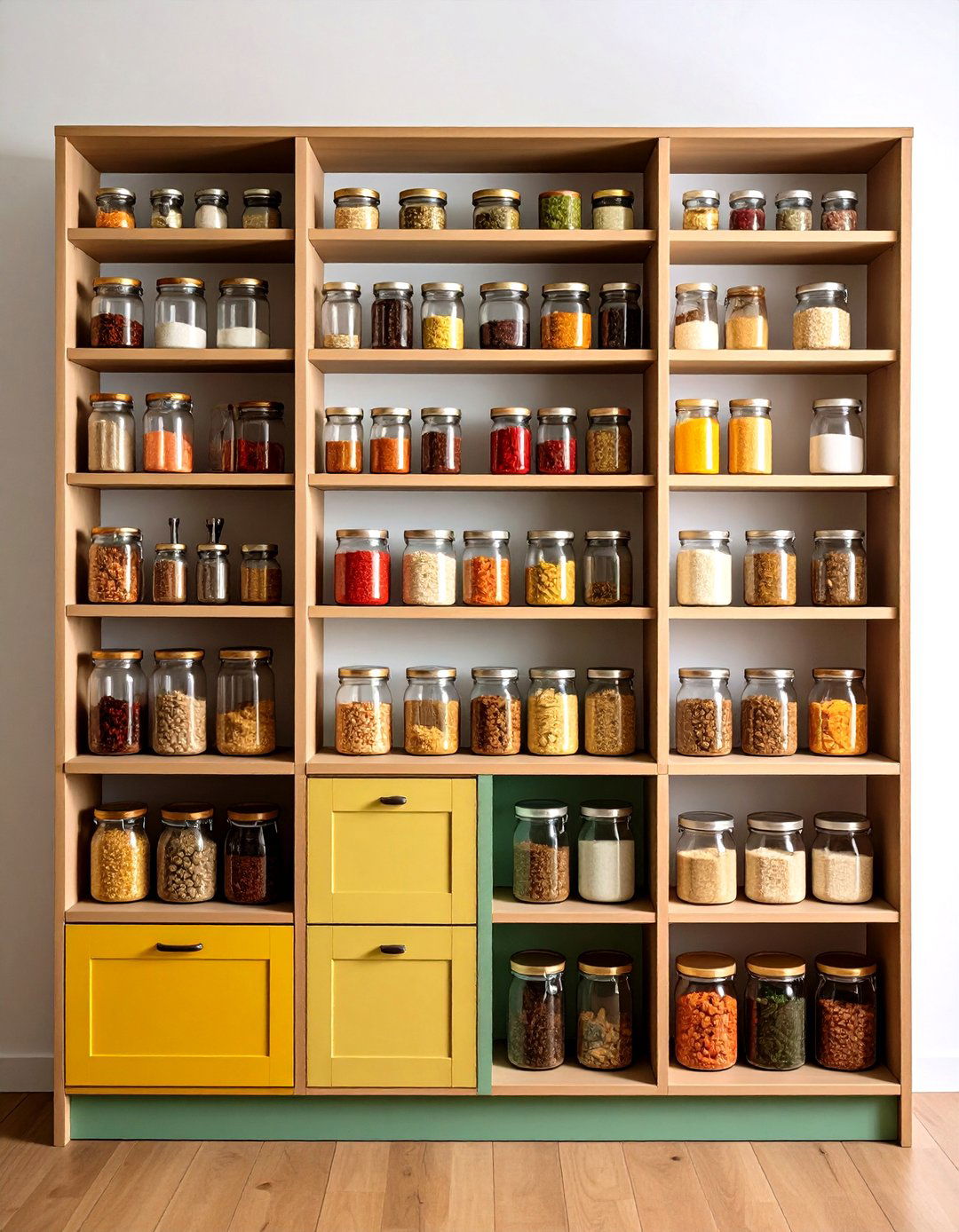
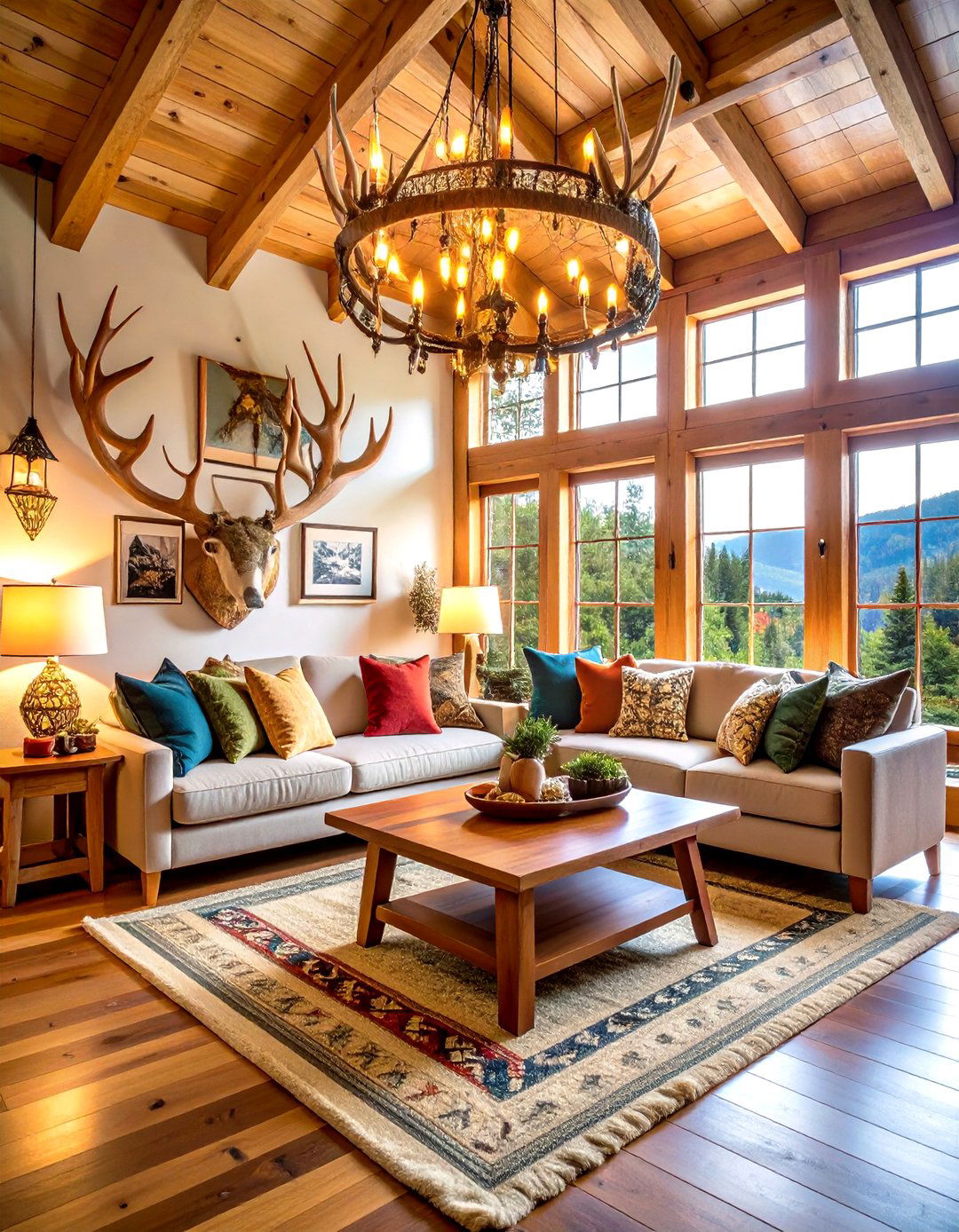
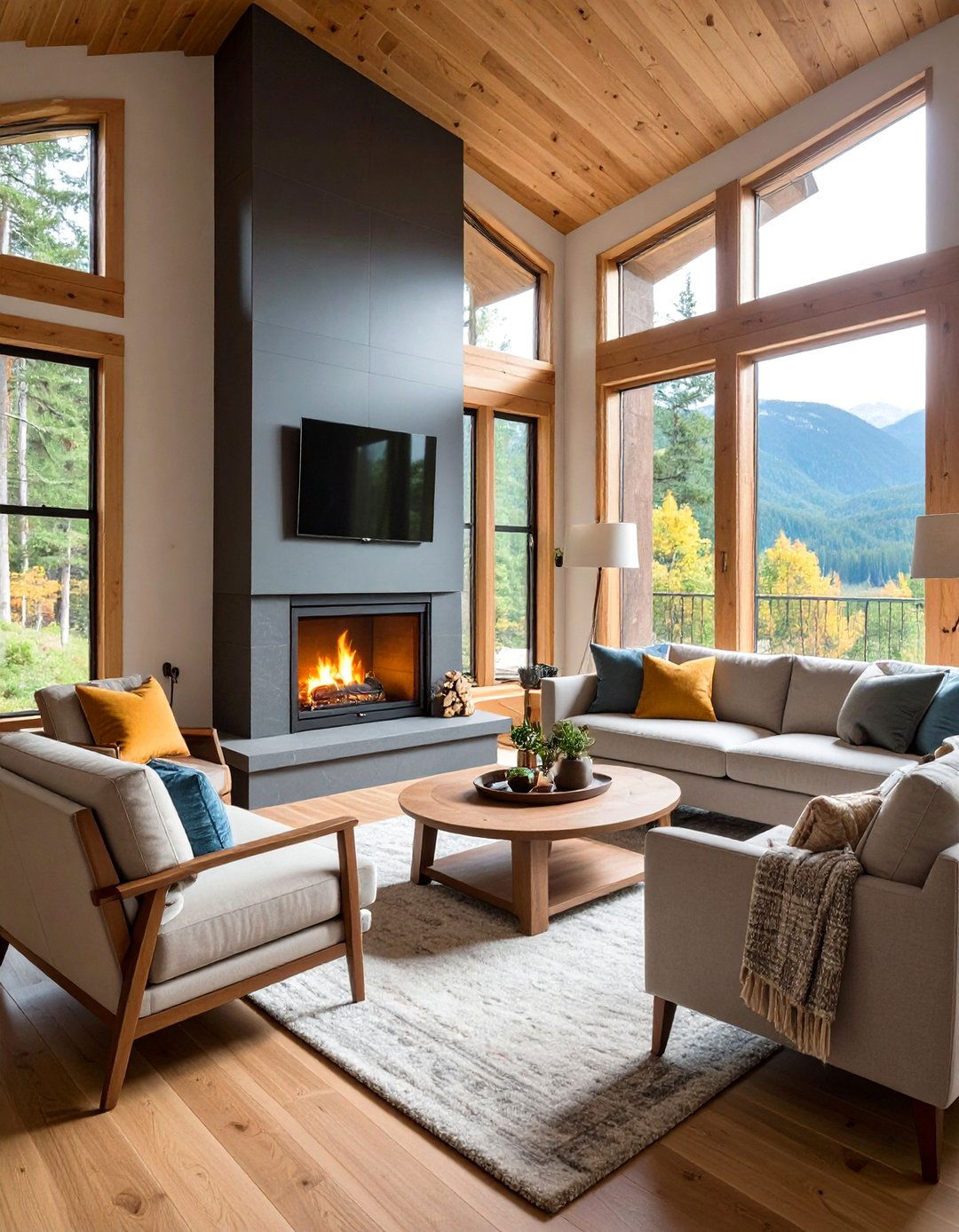

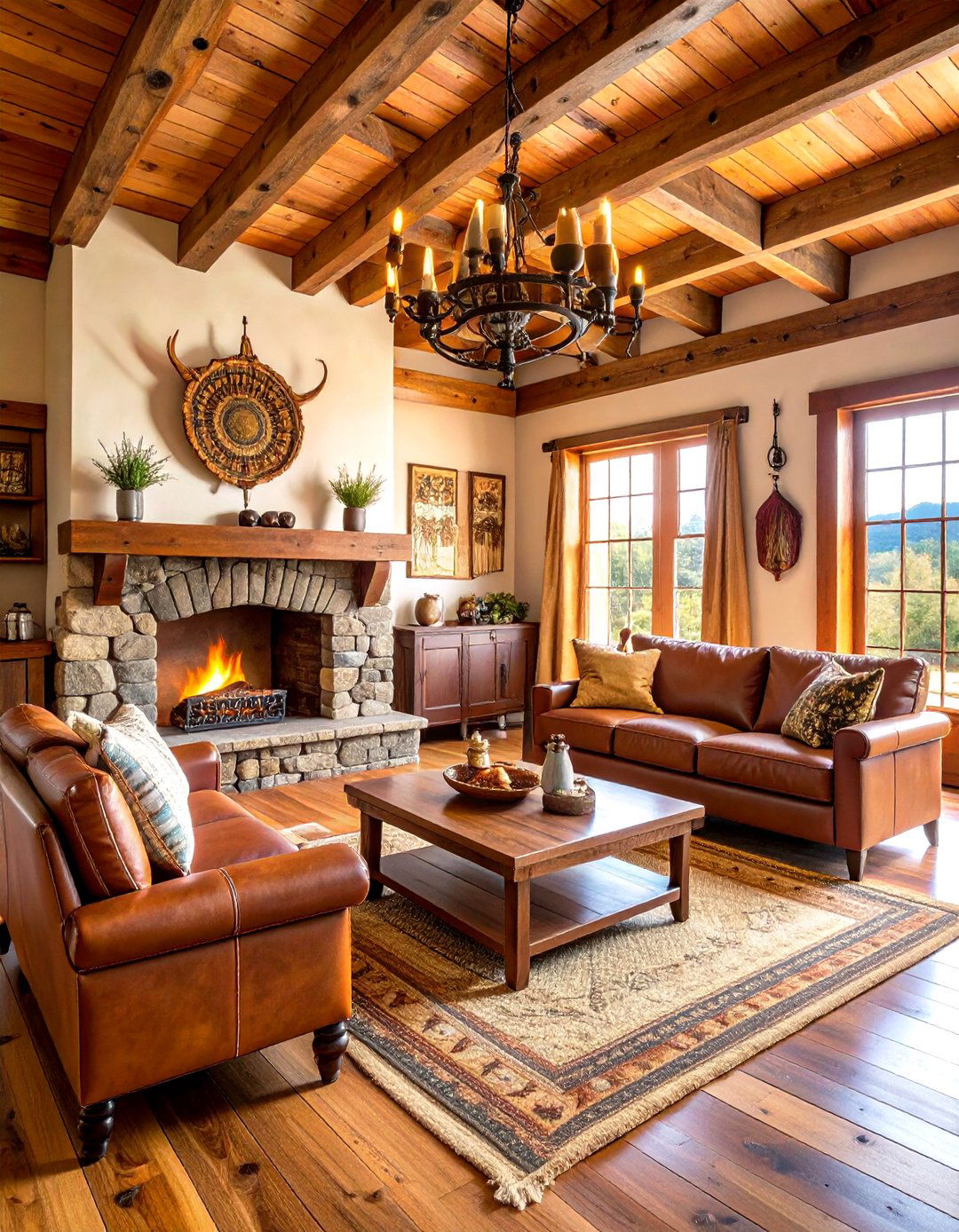

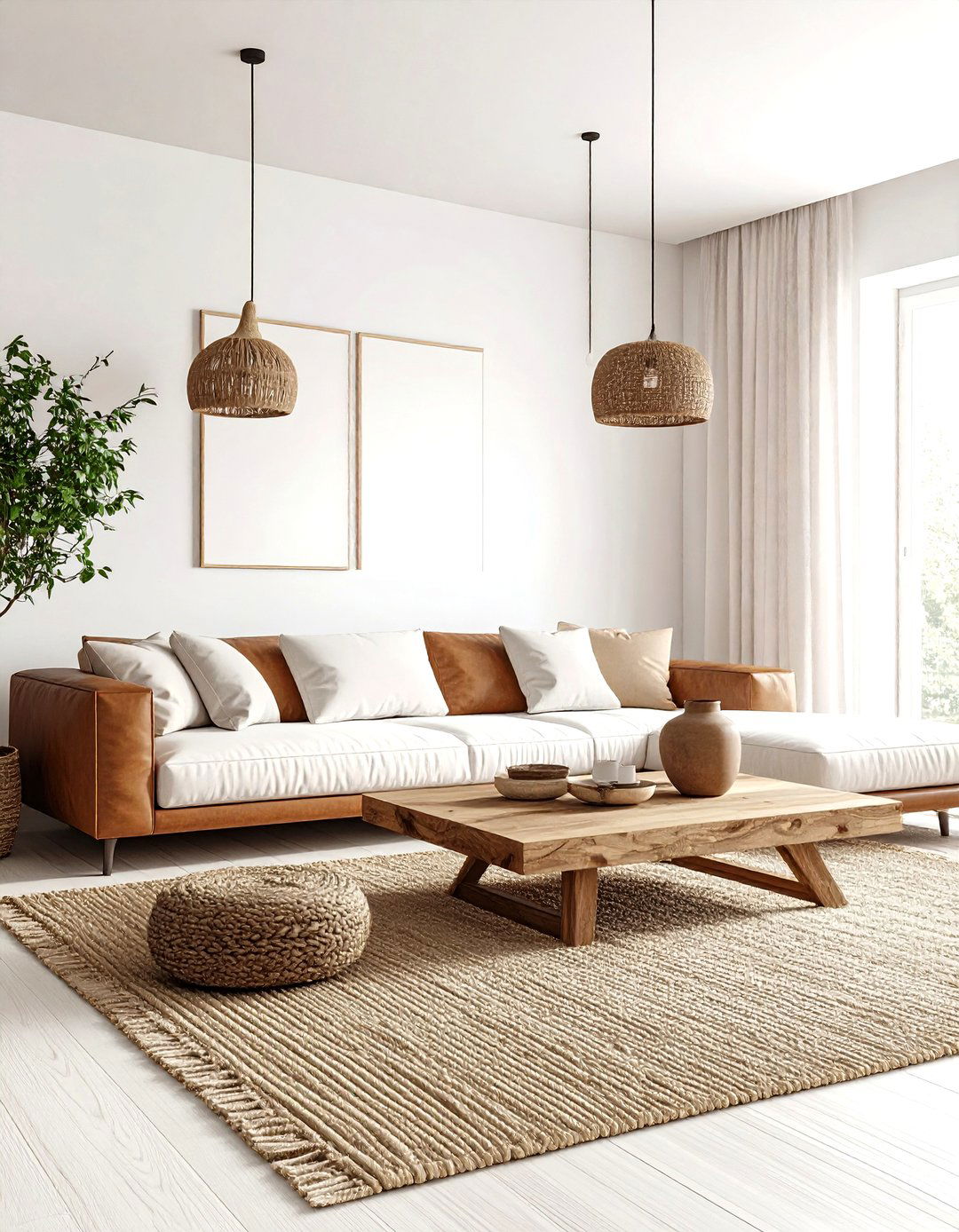
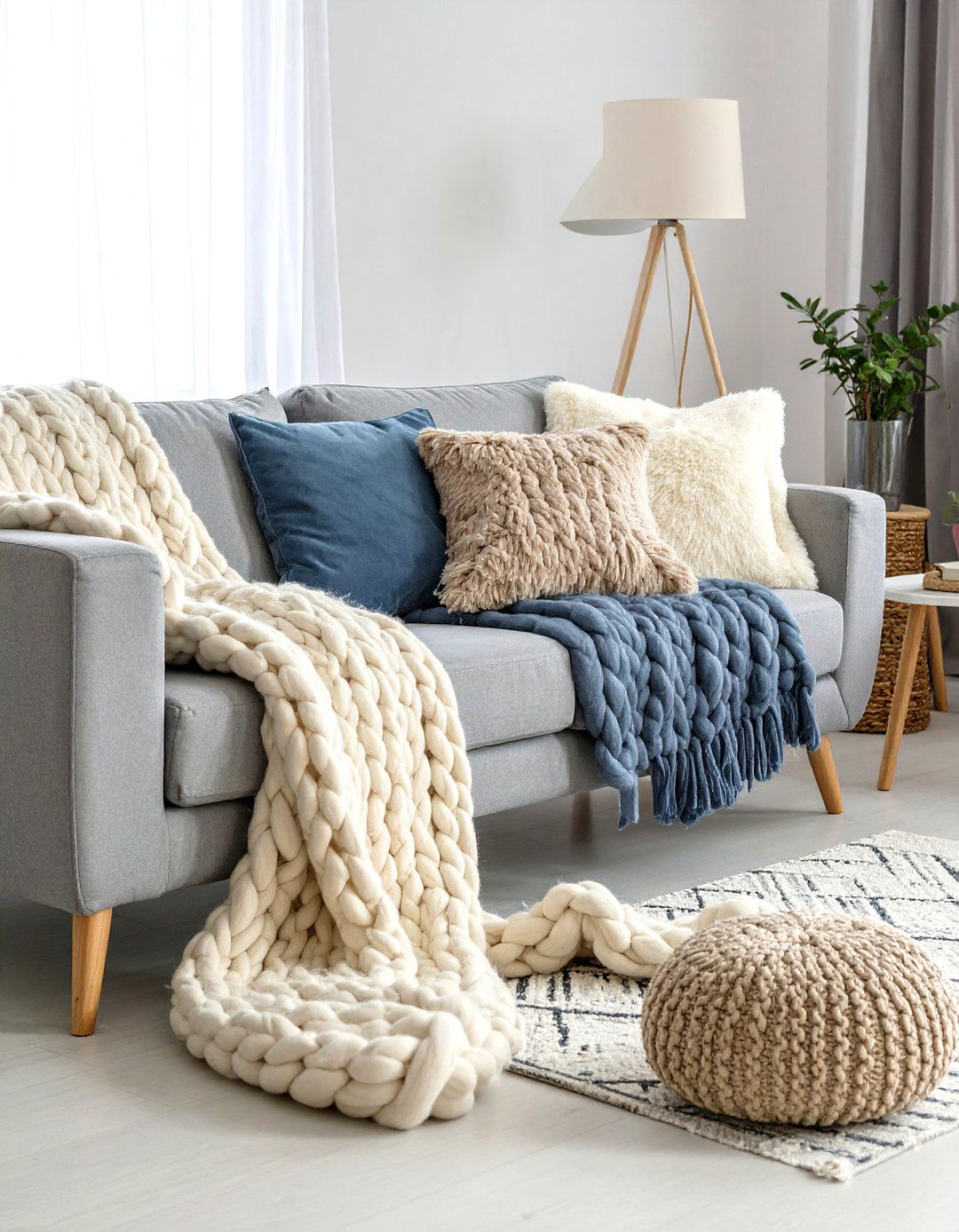
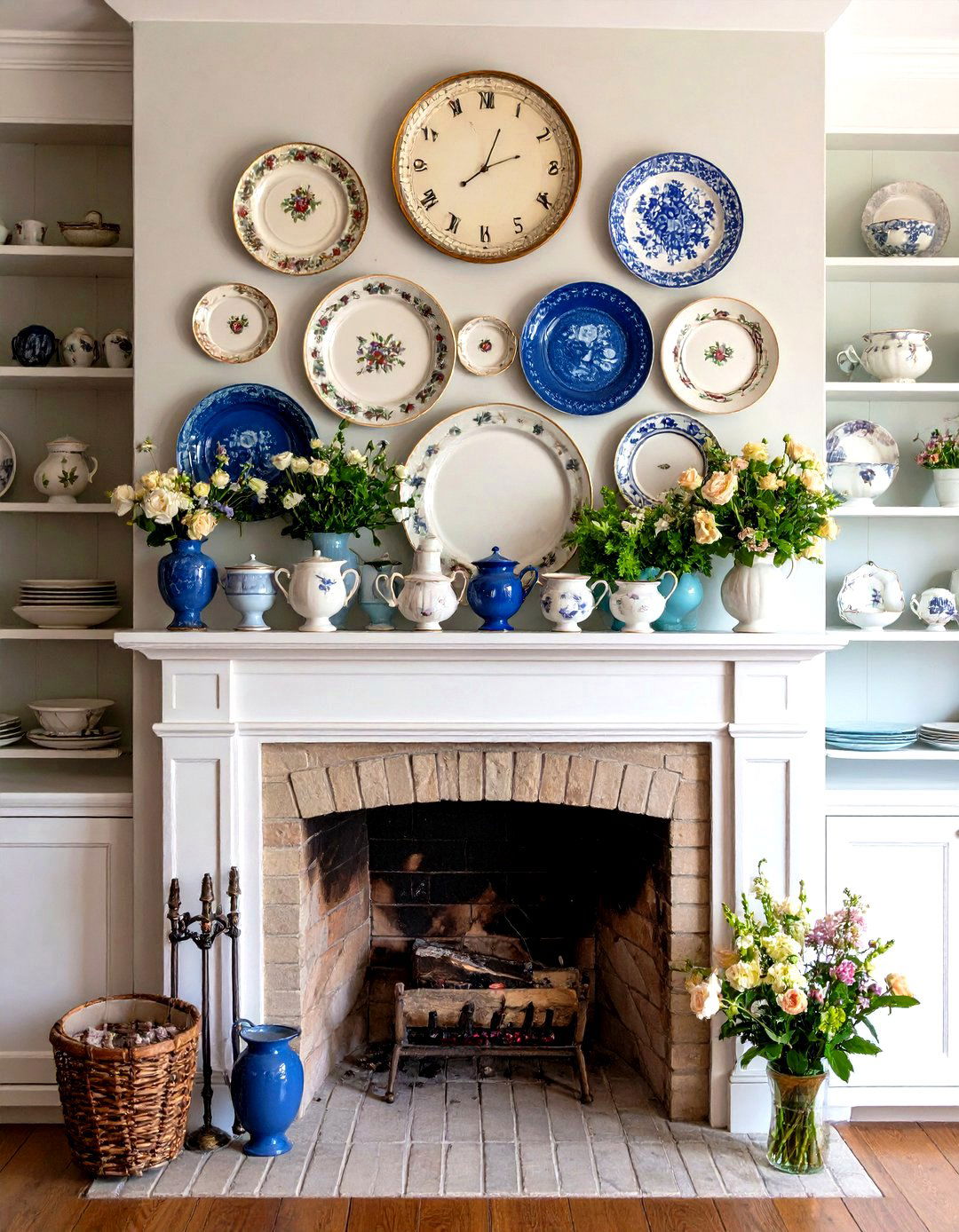
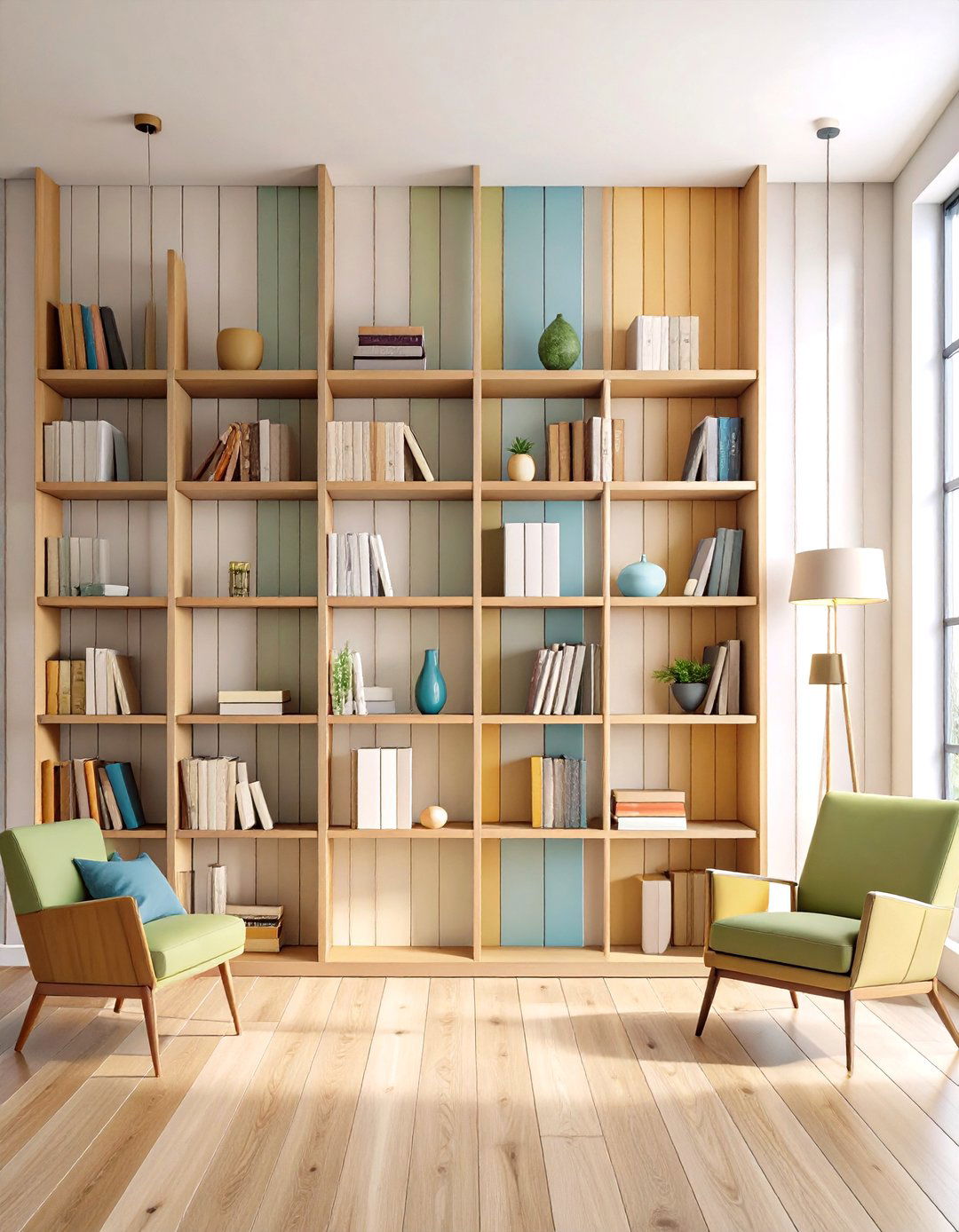
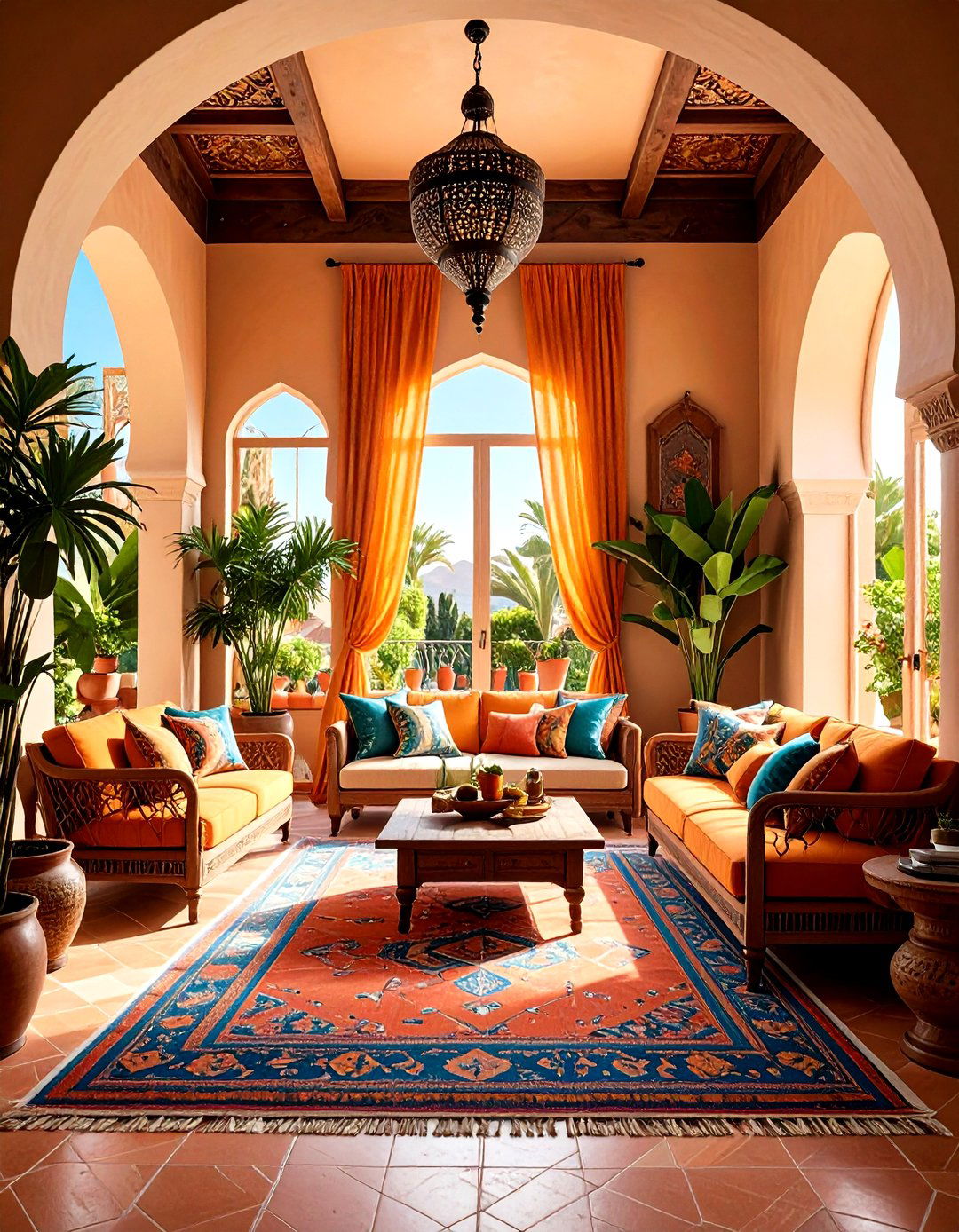
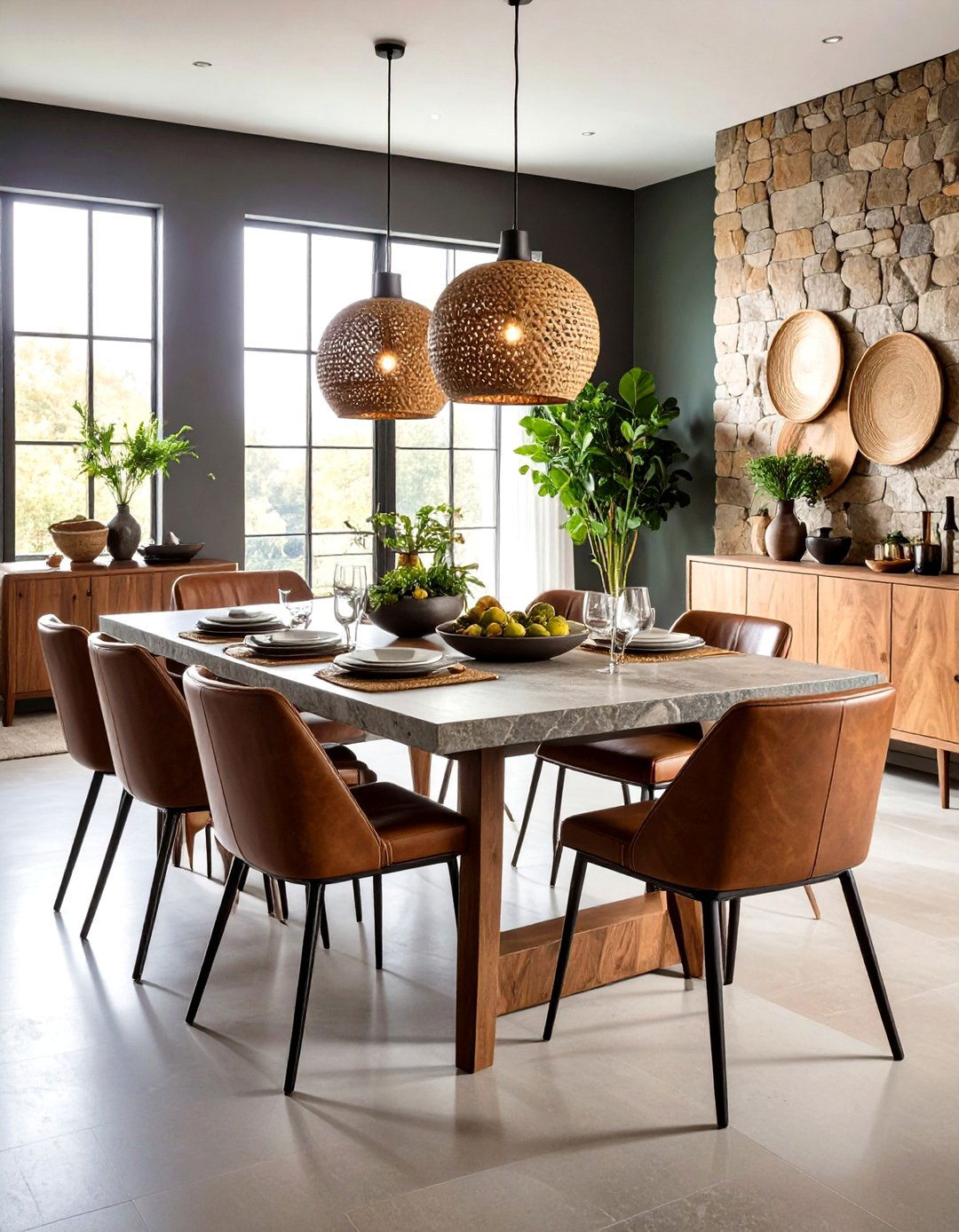
Leave a Reply